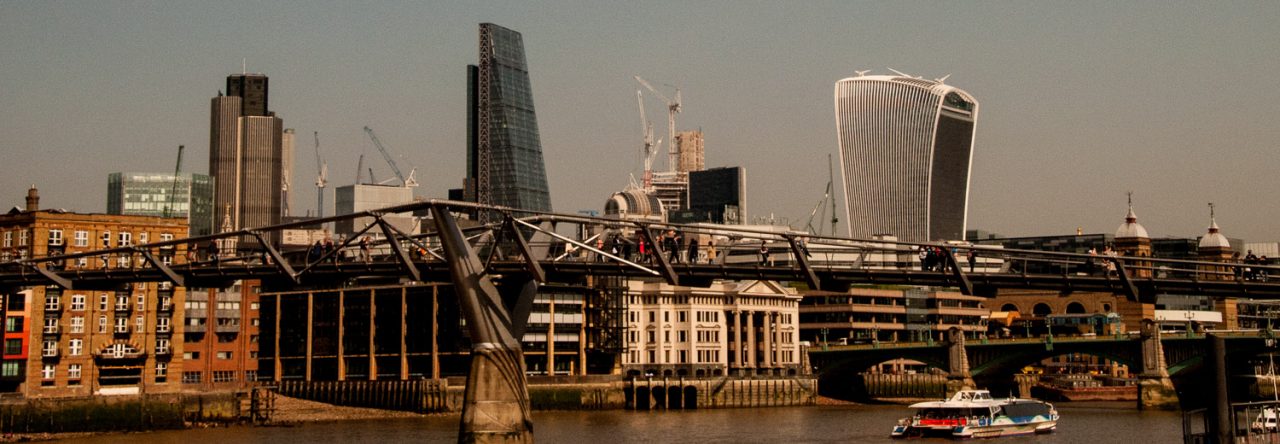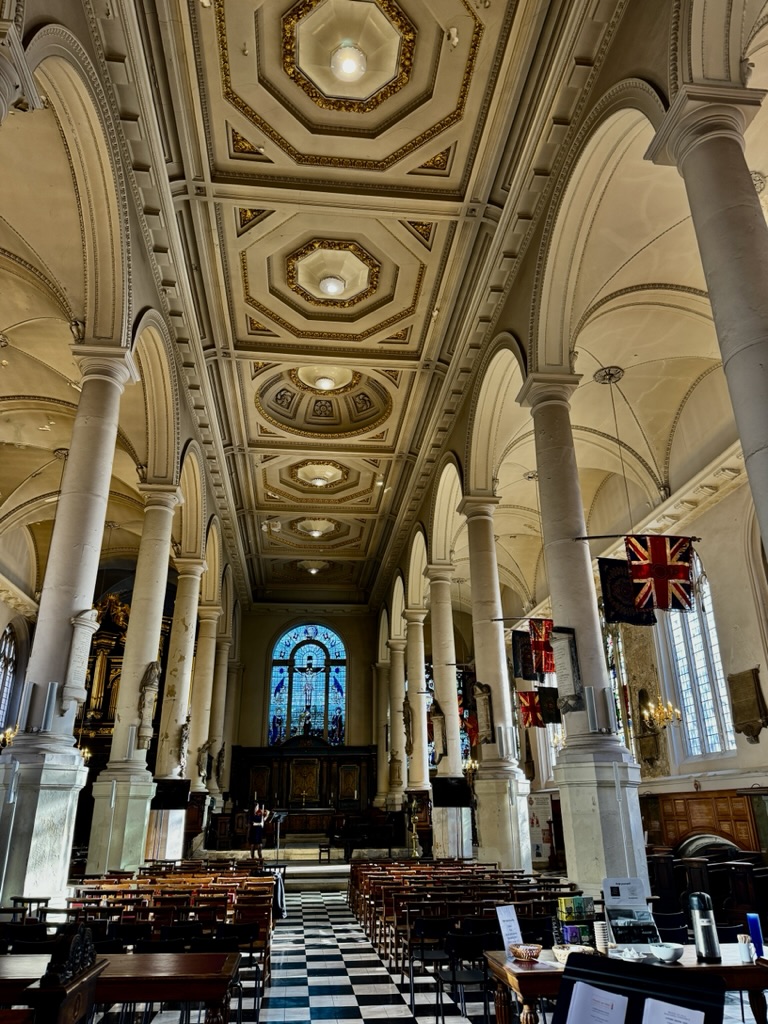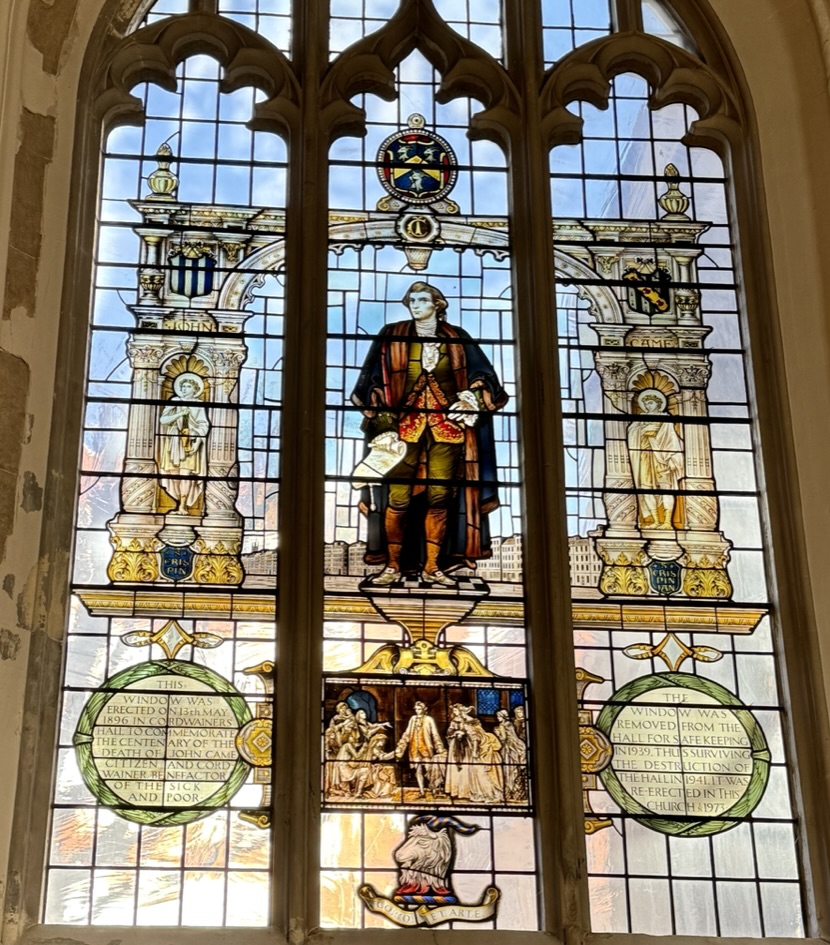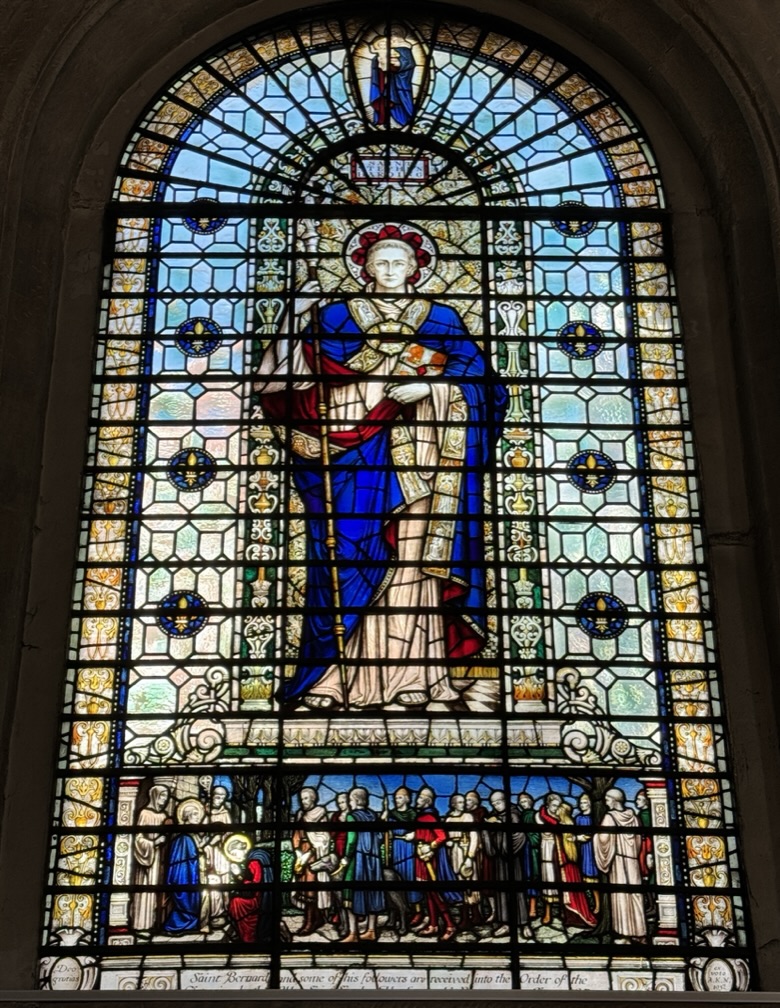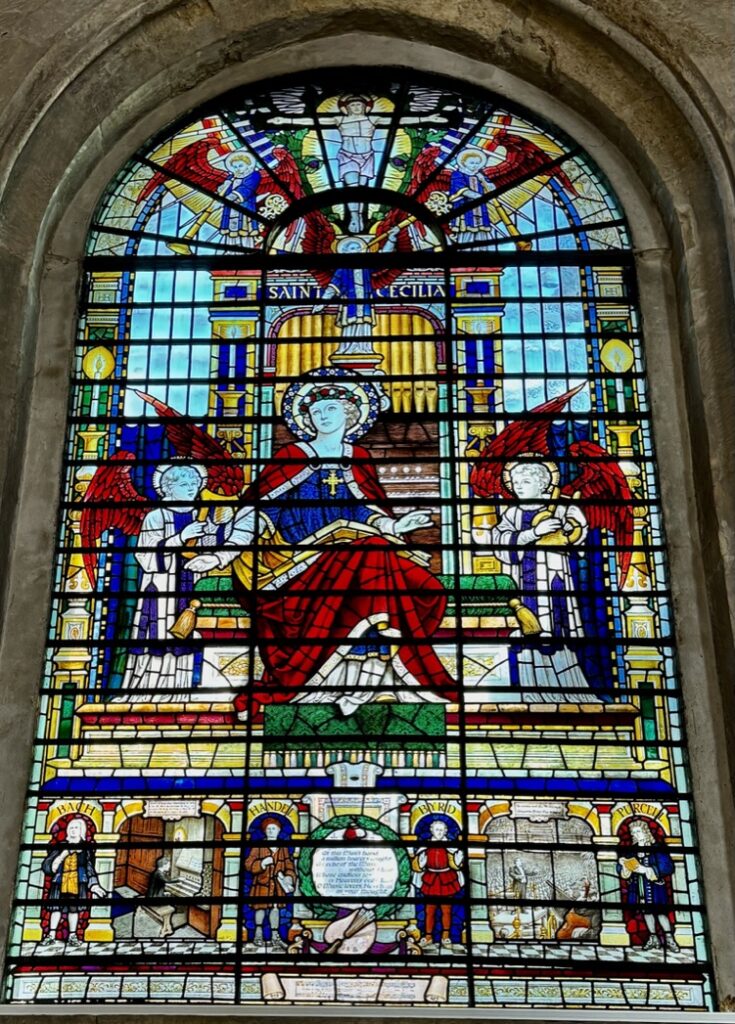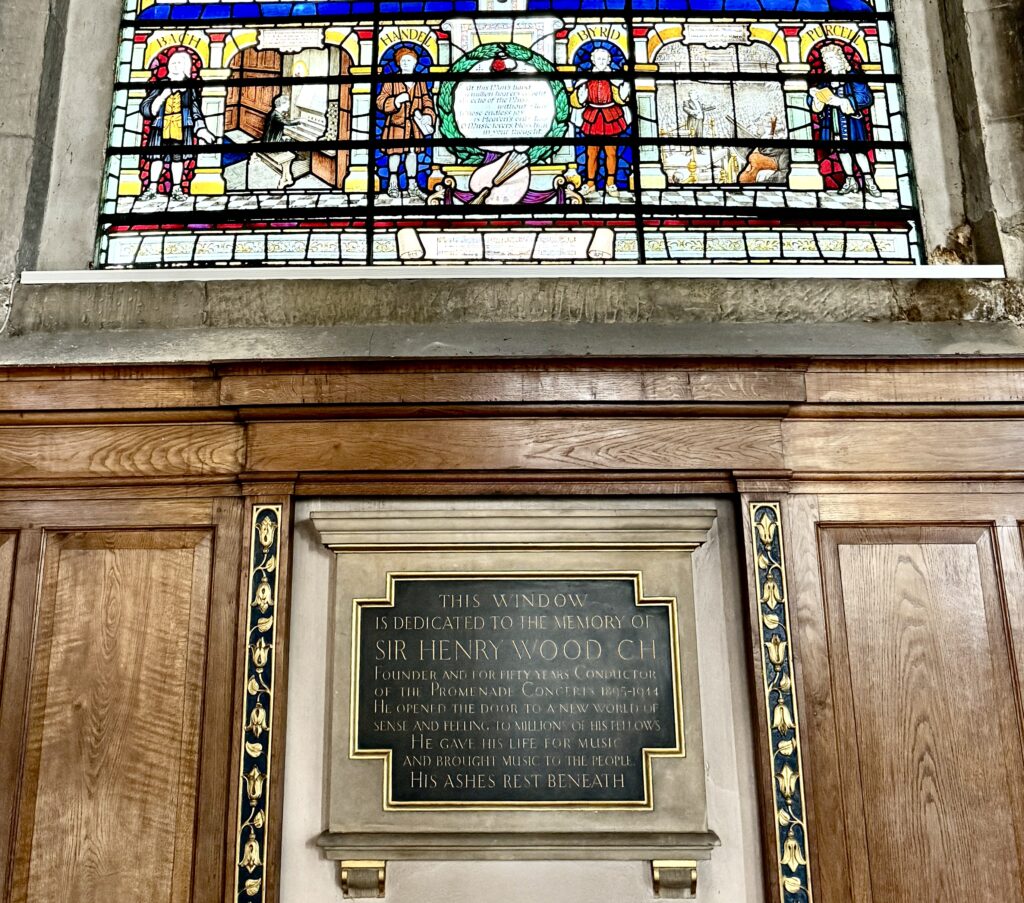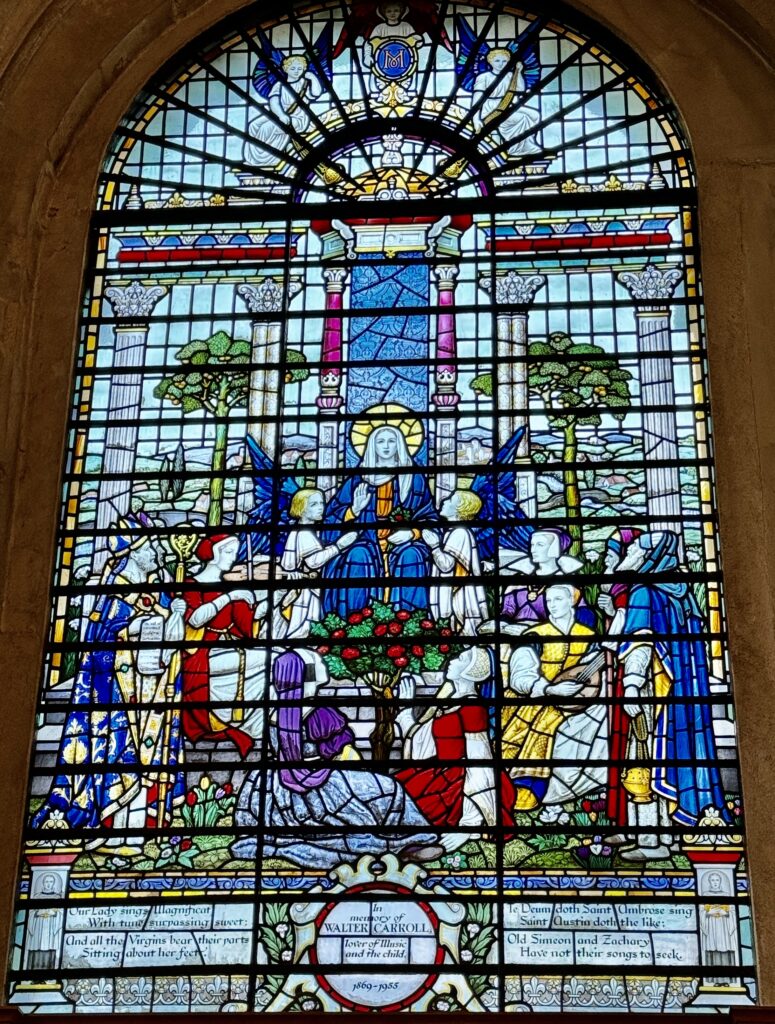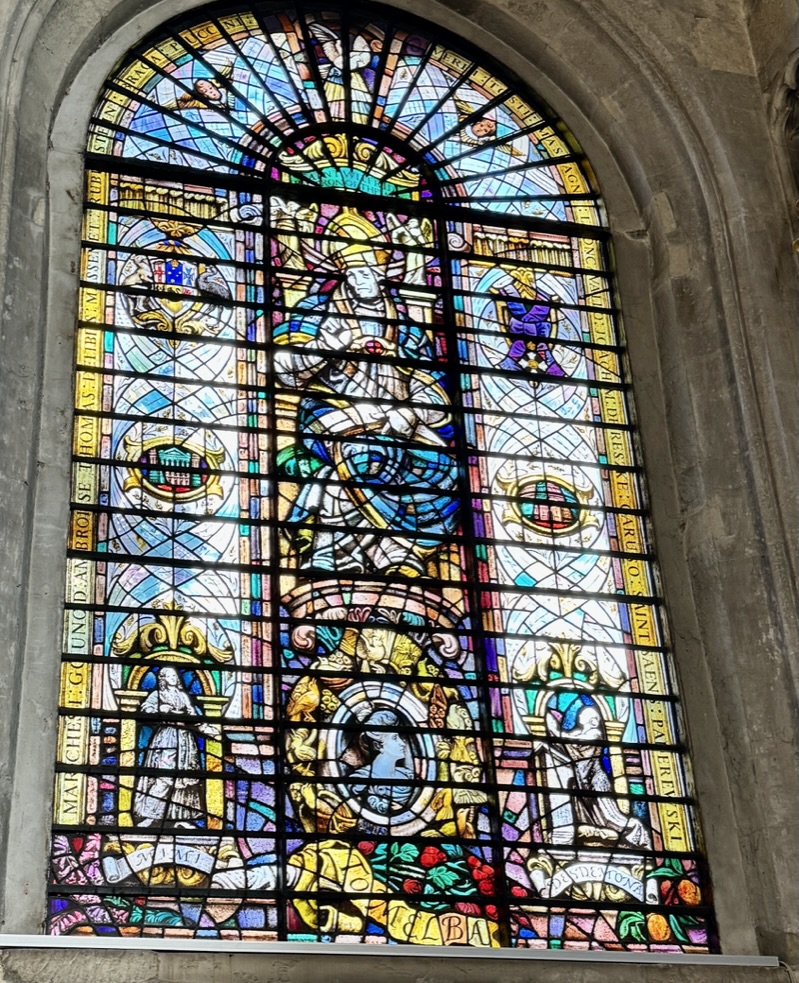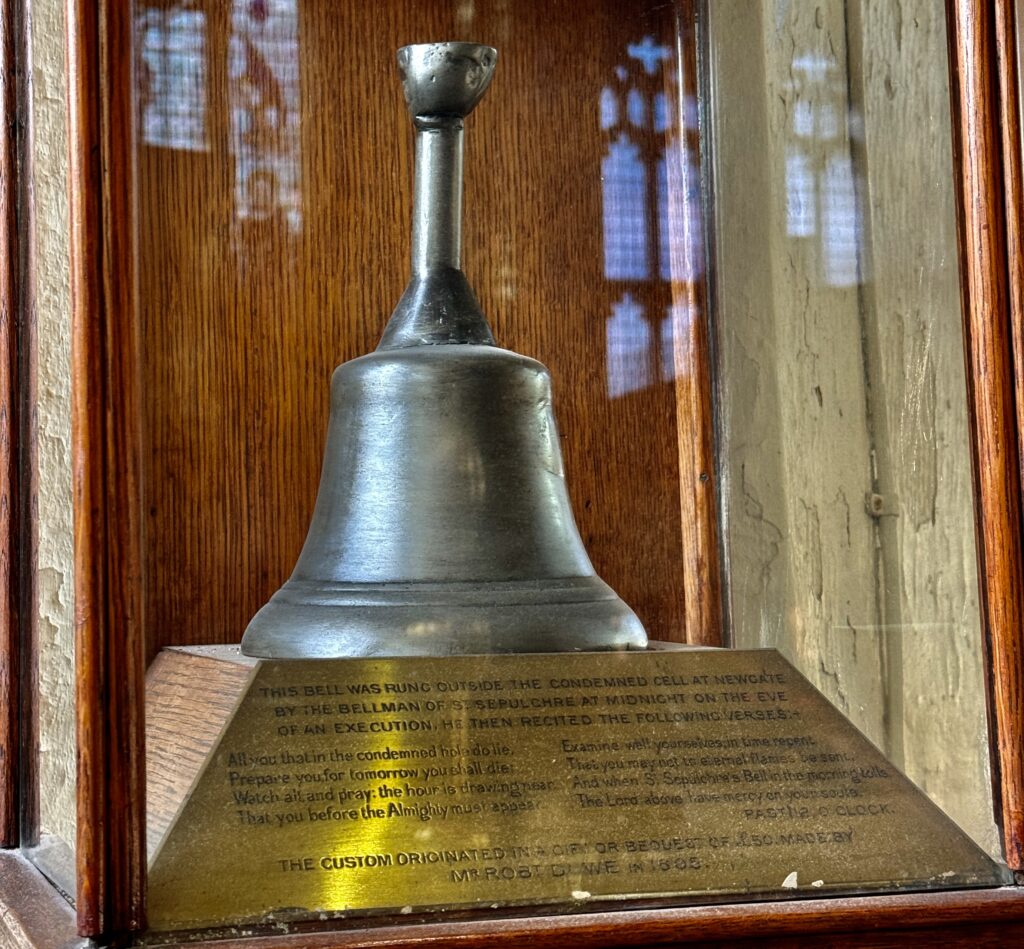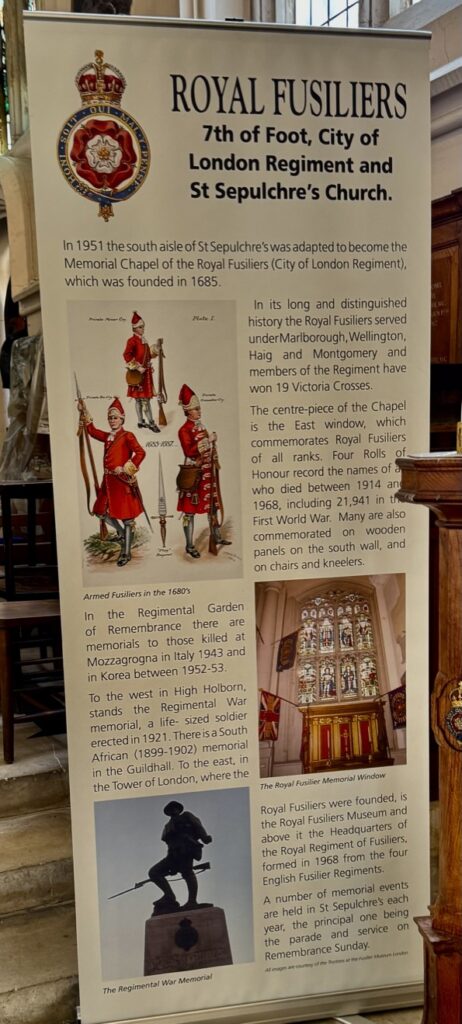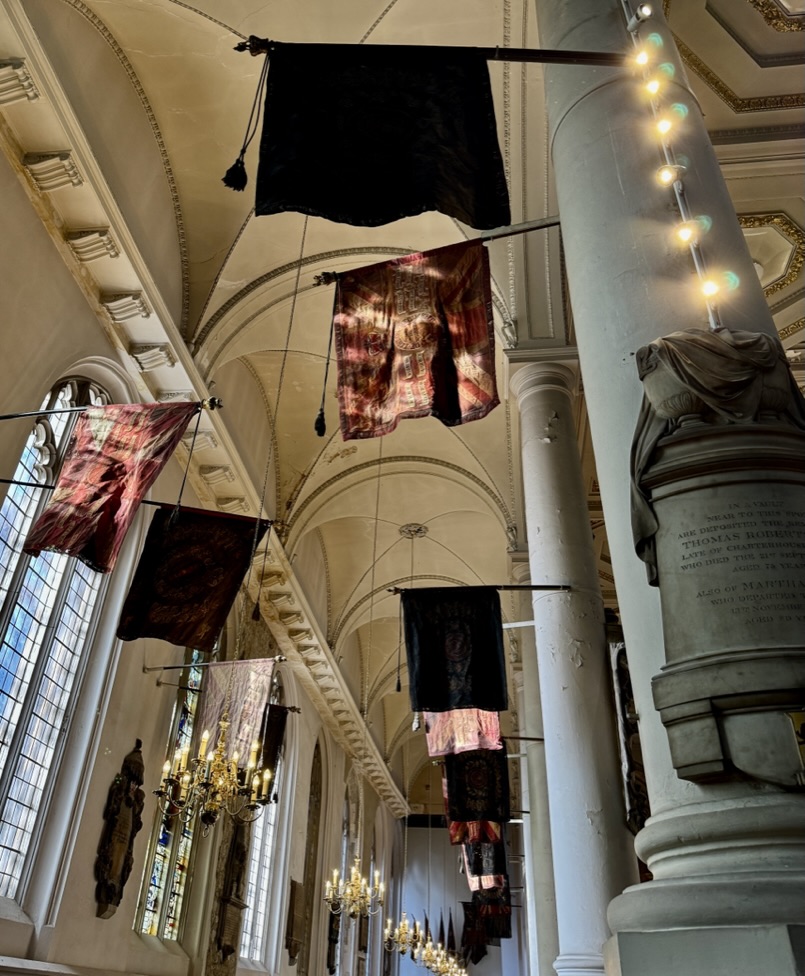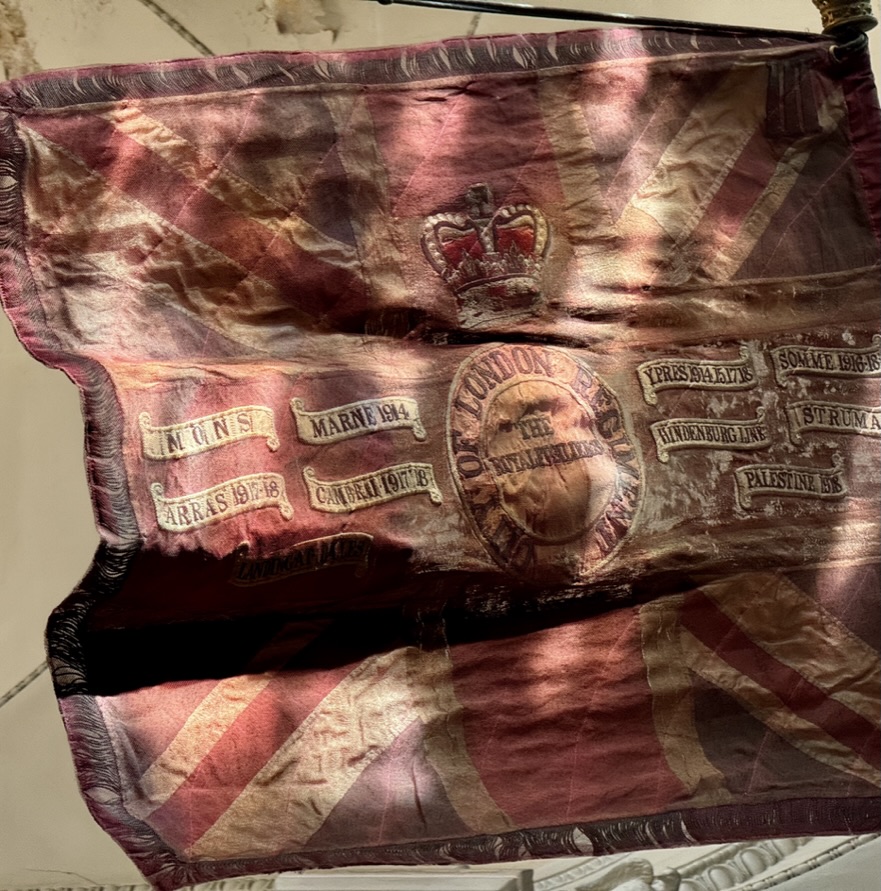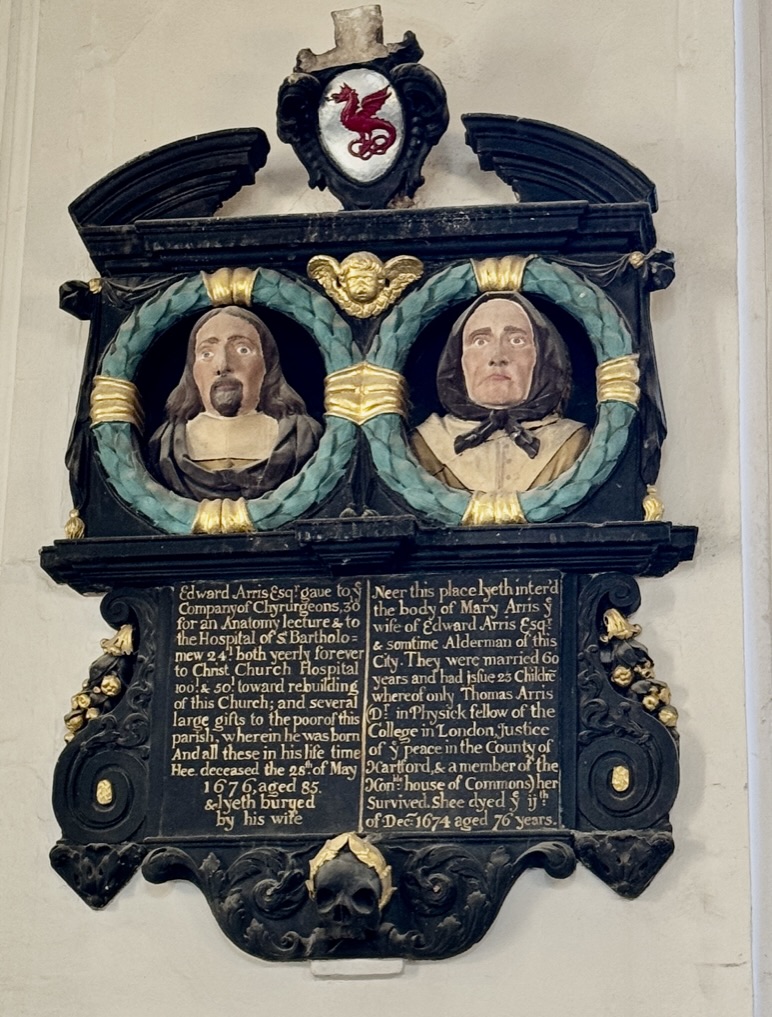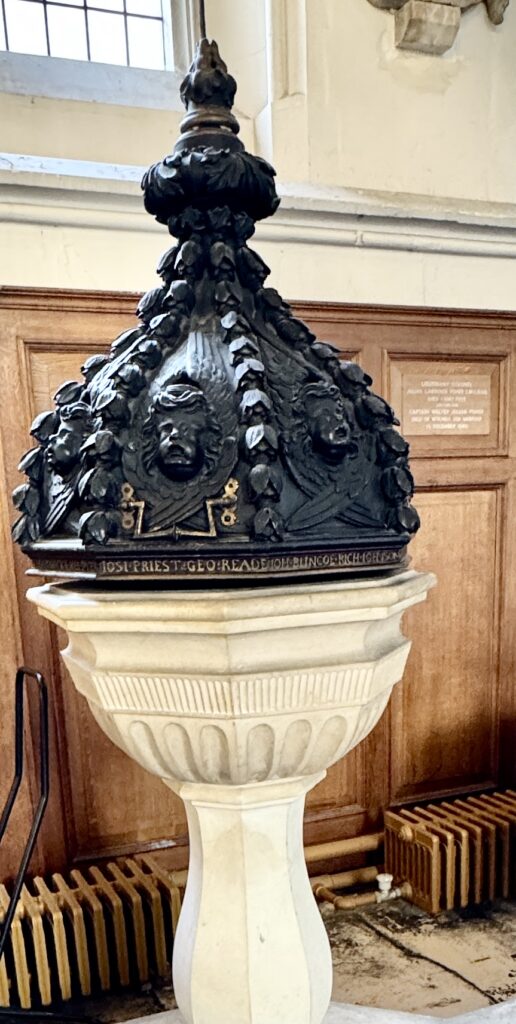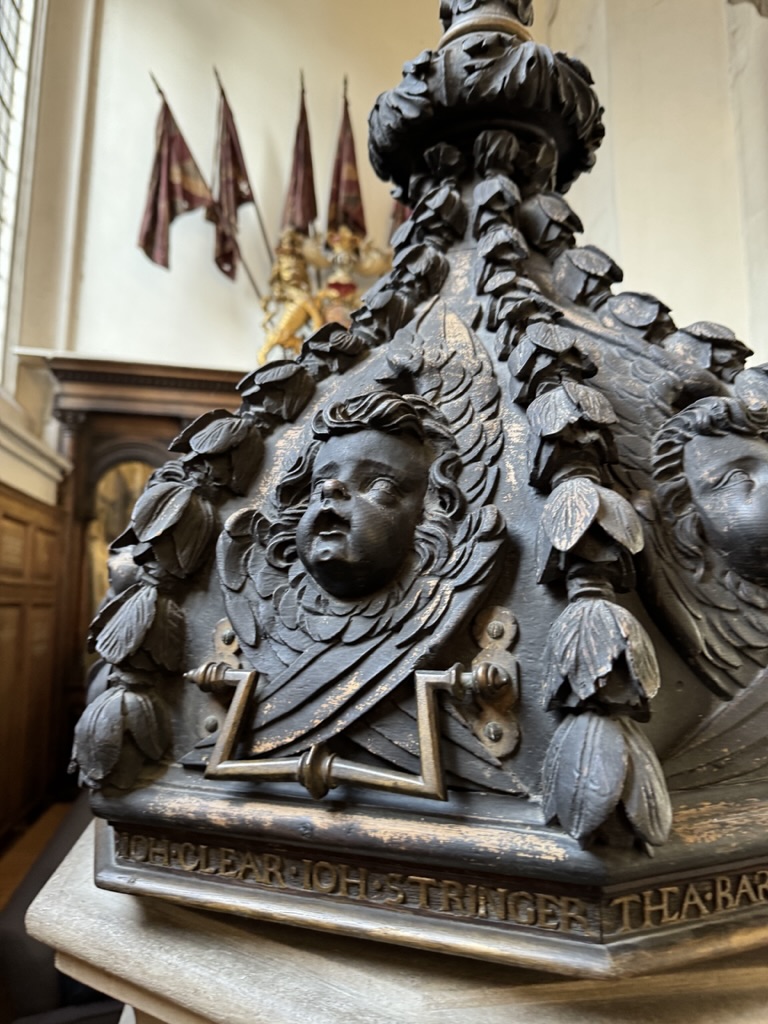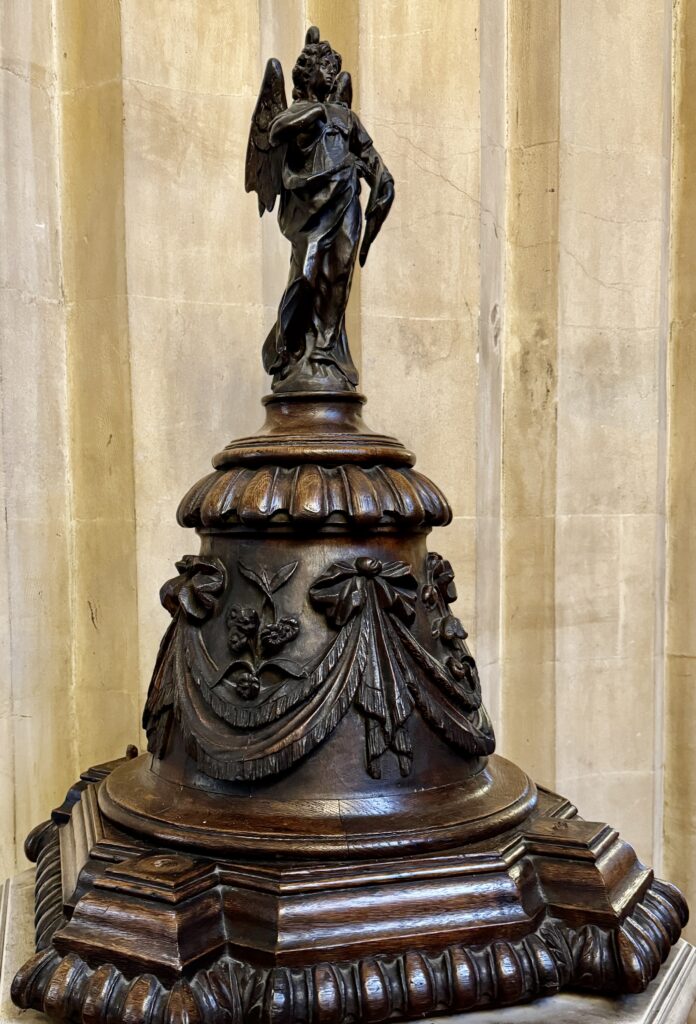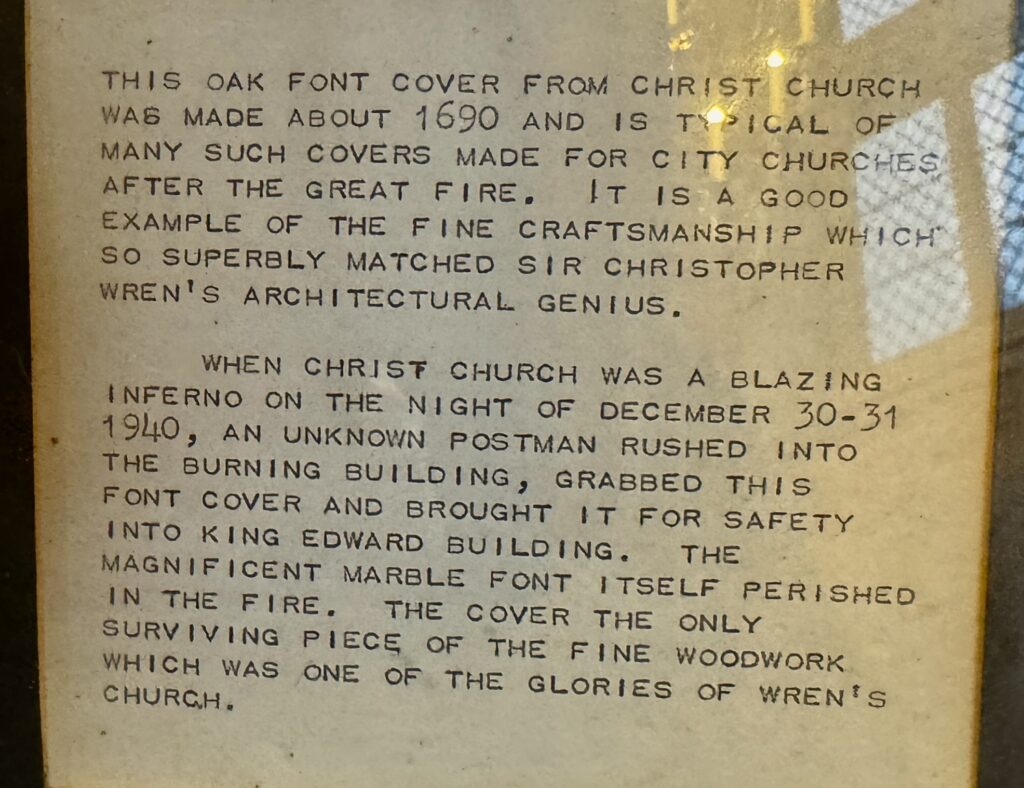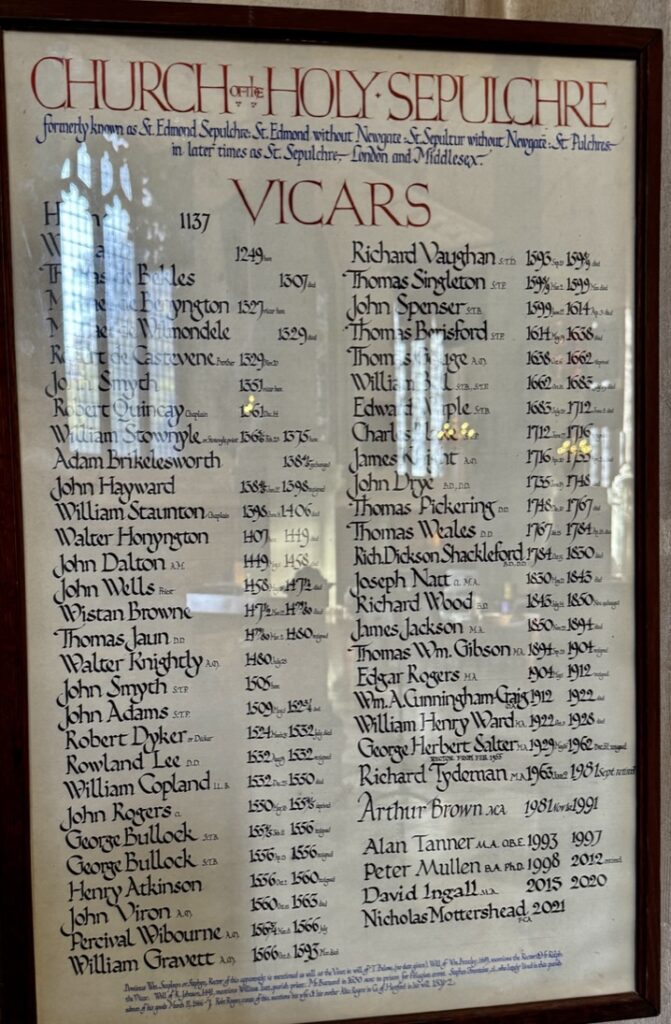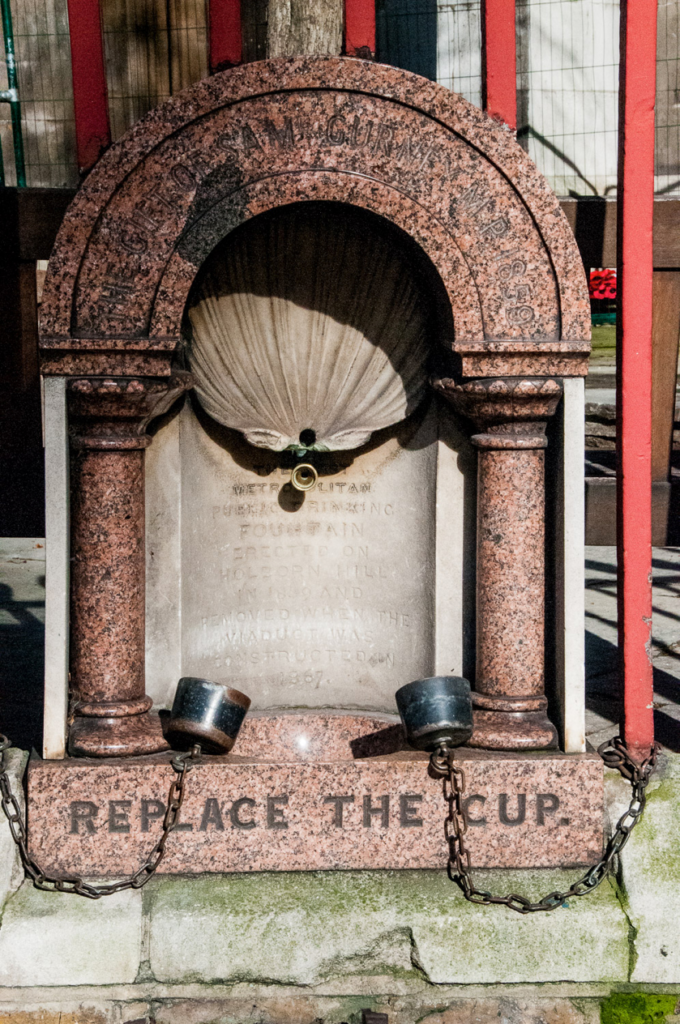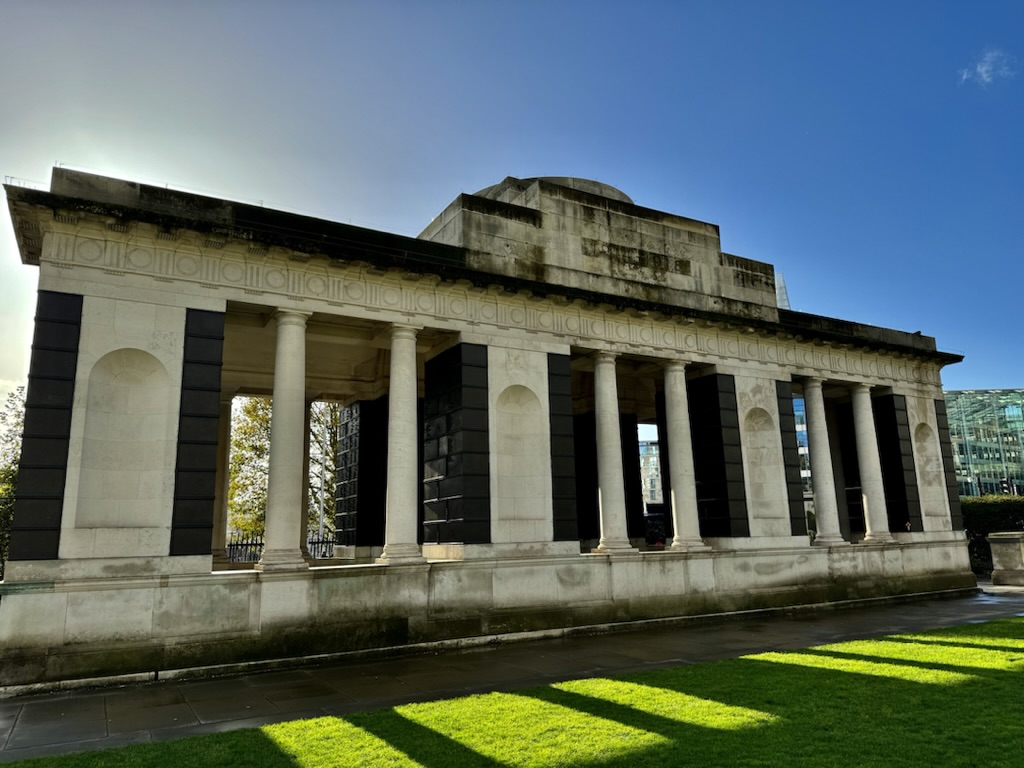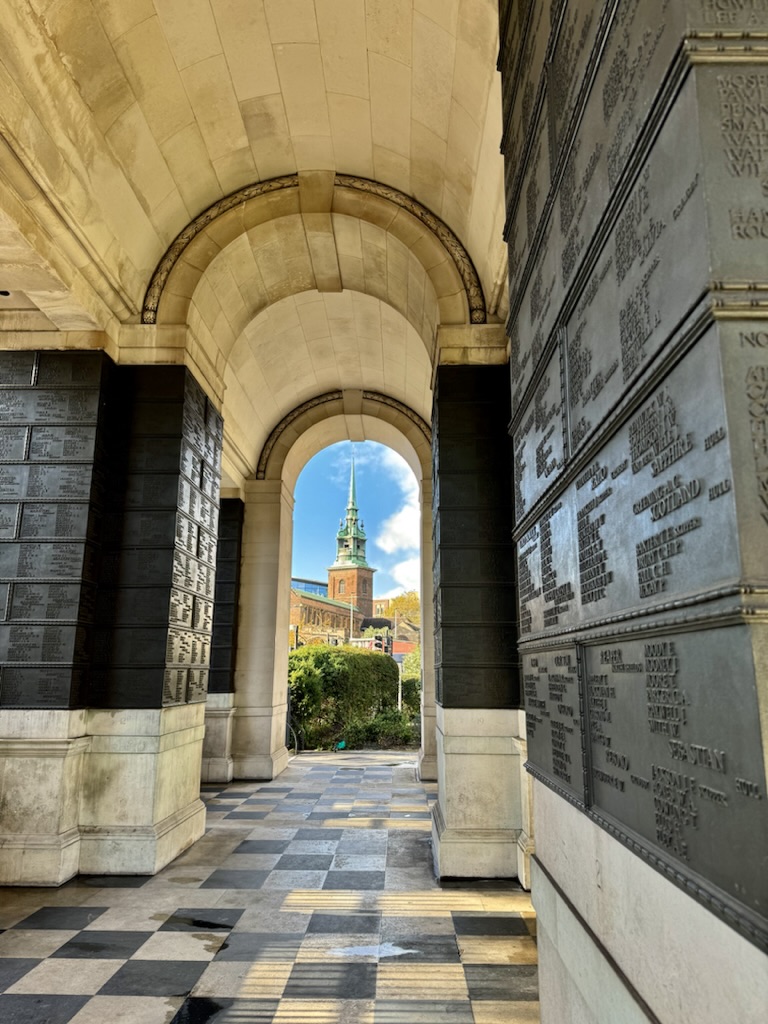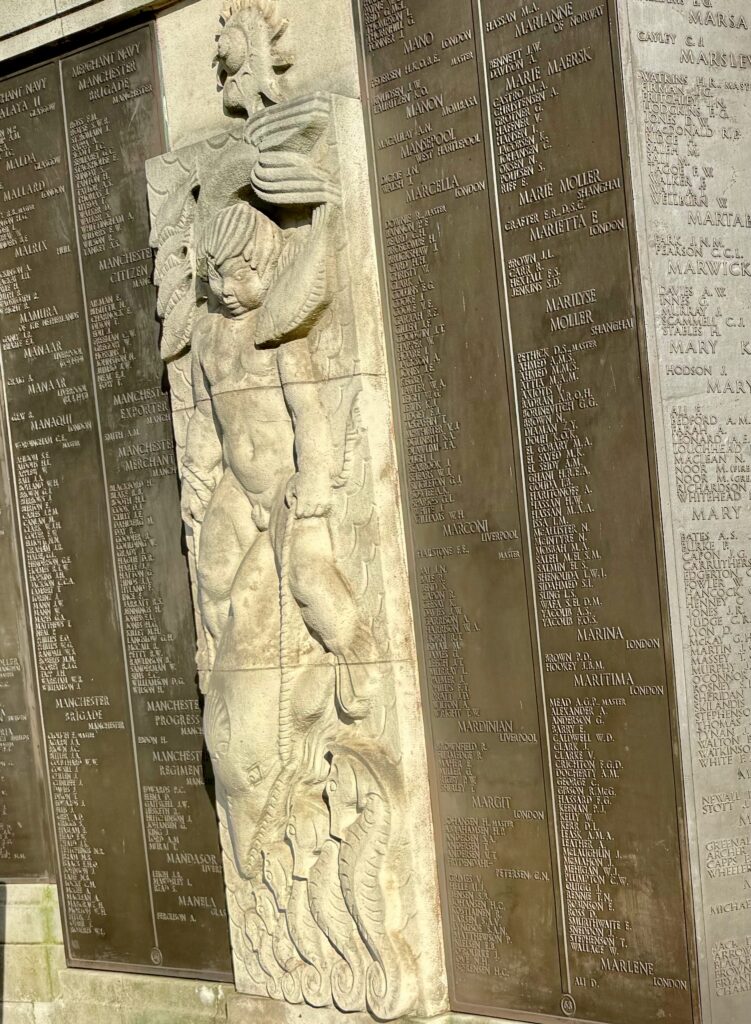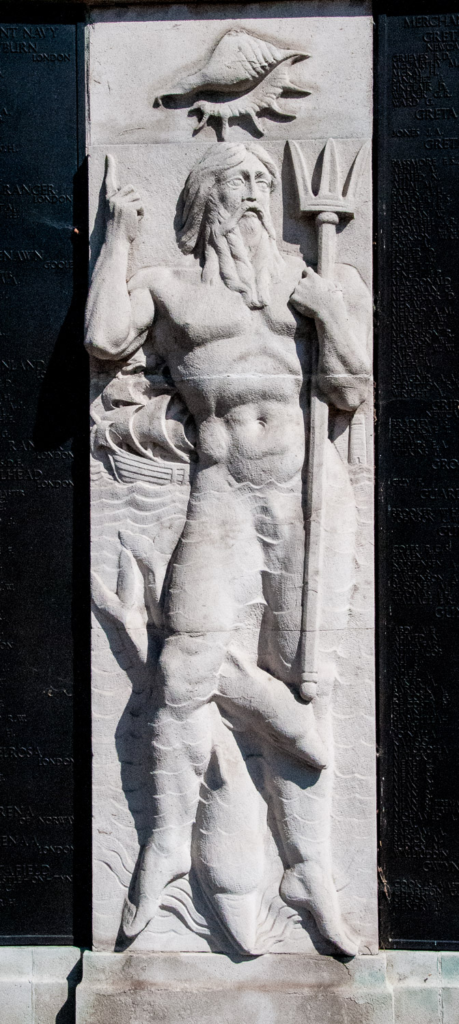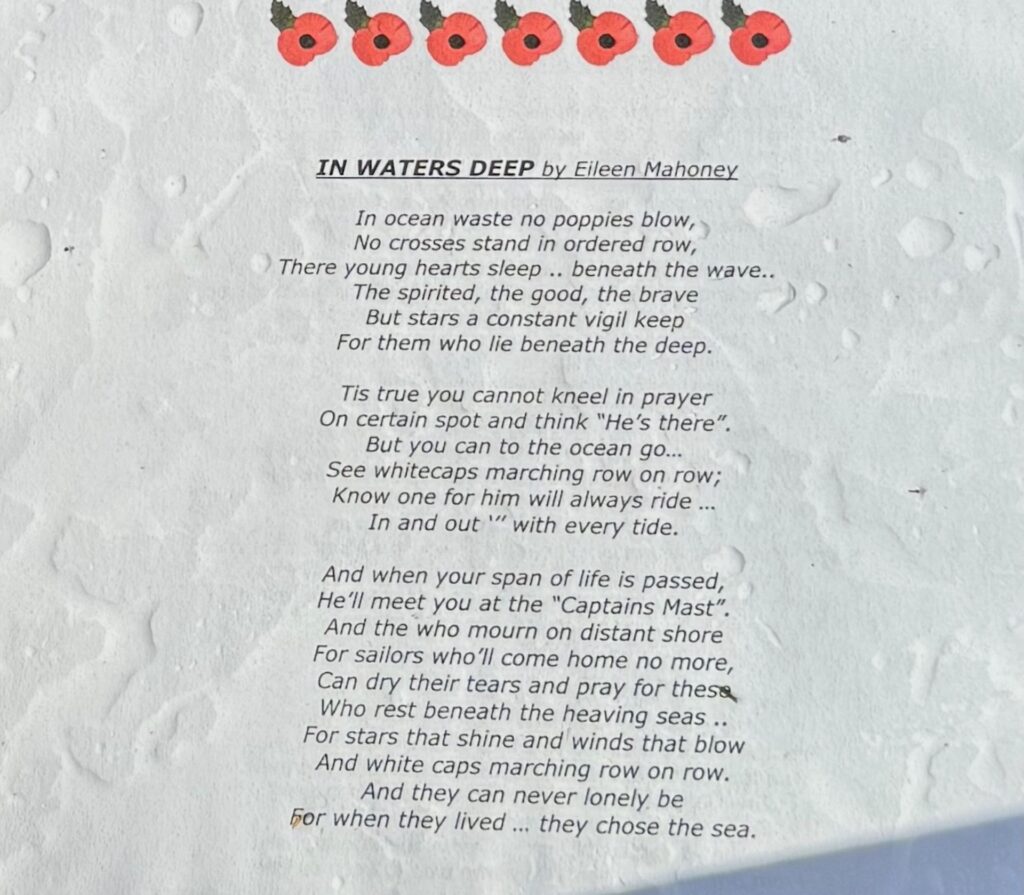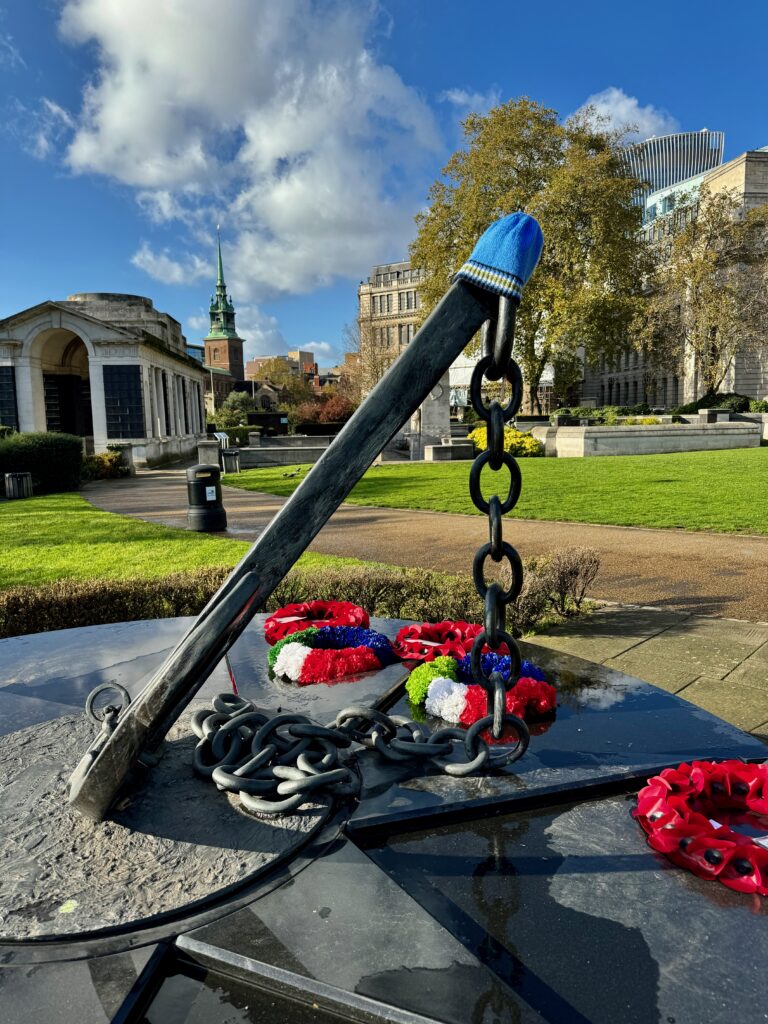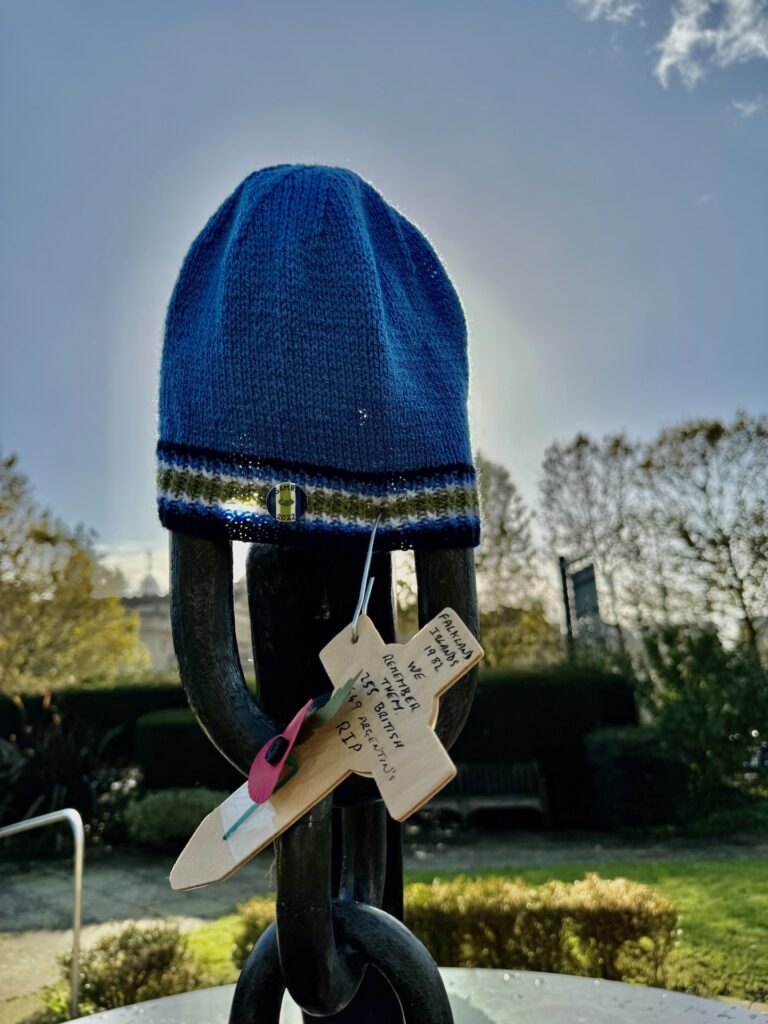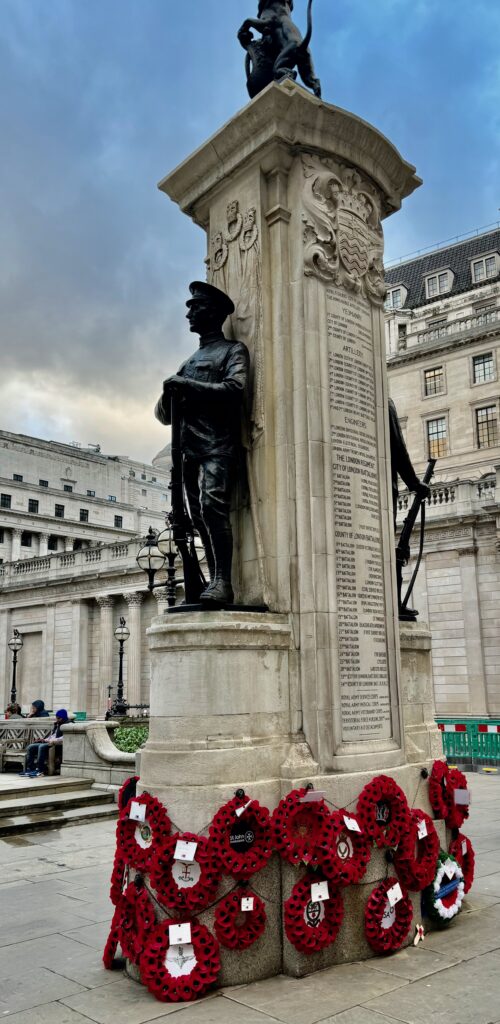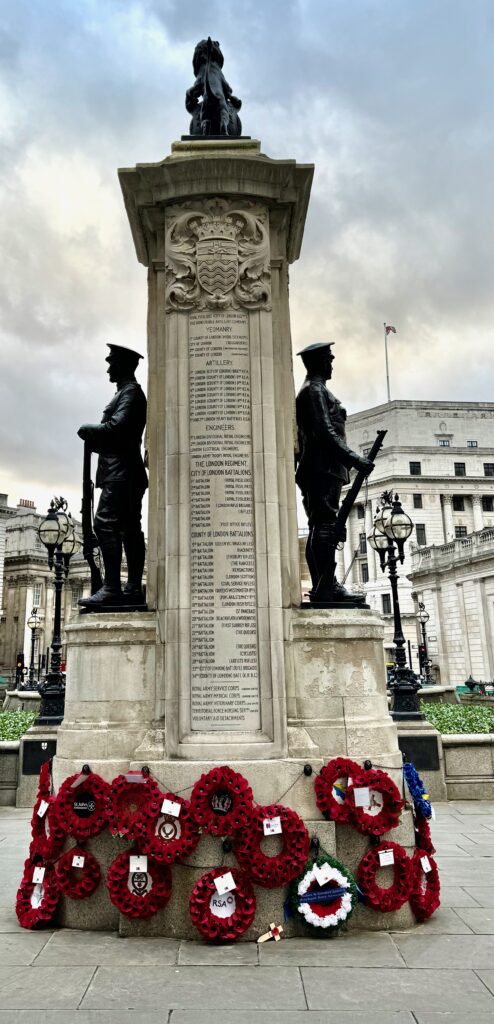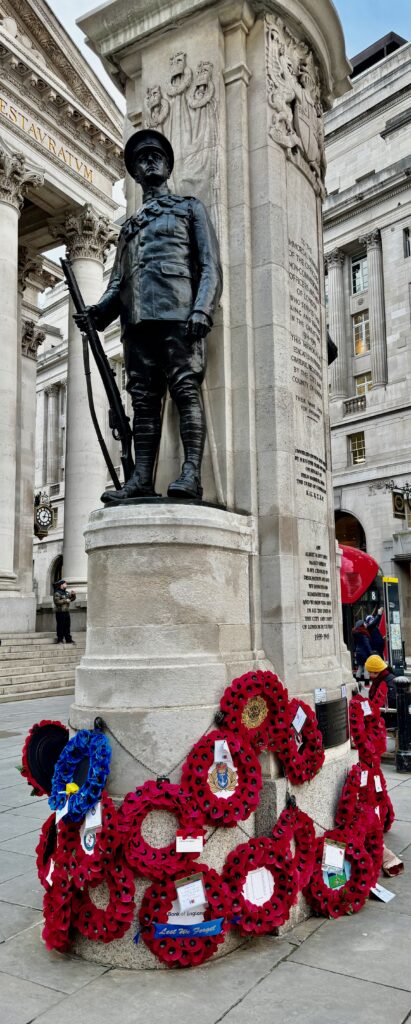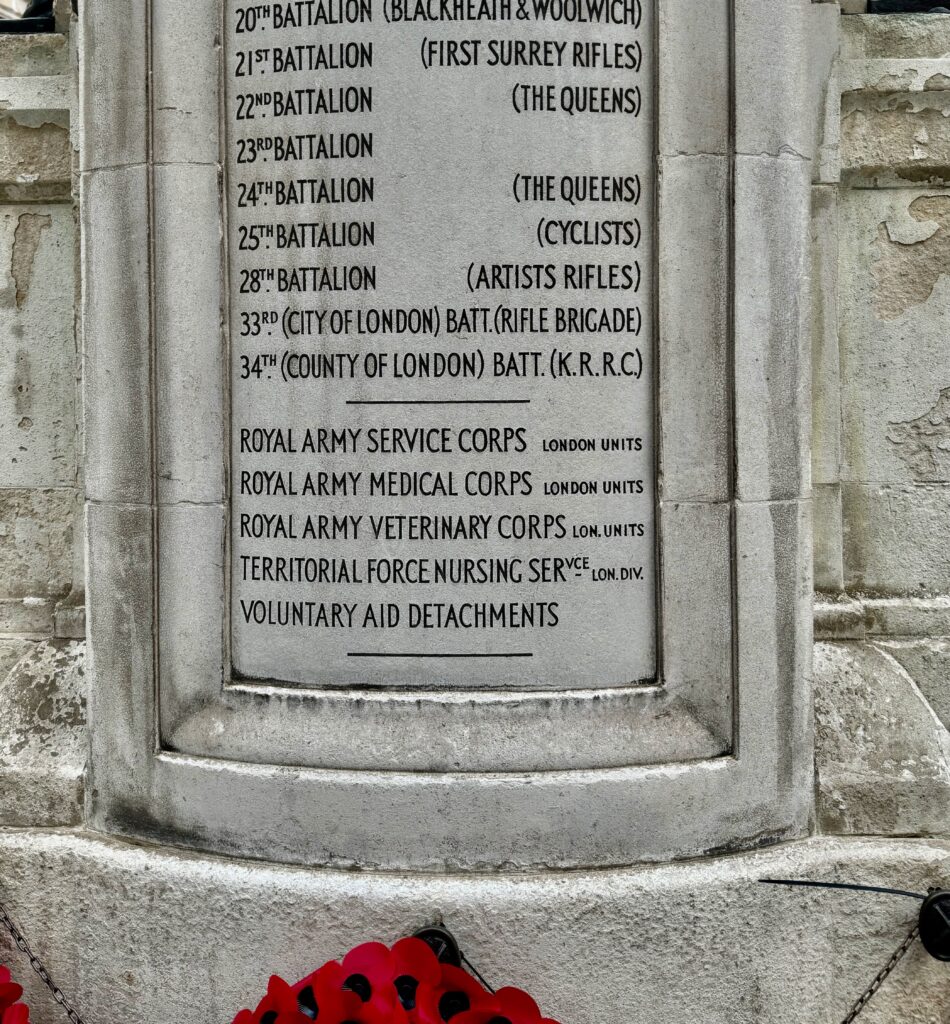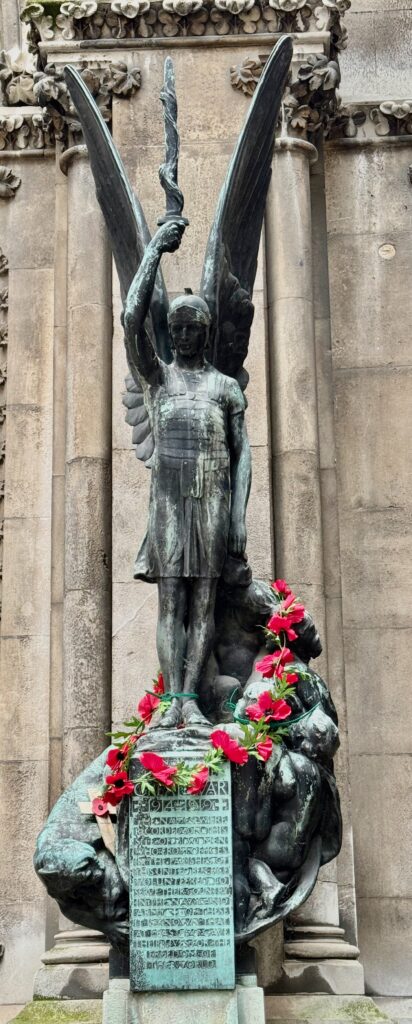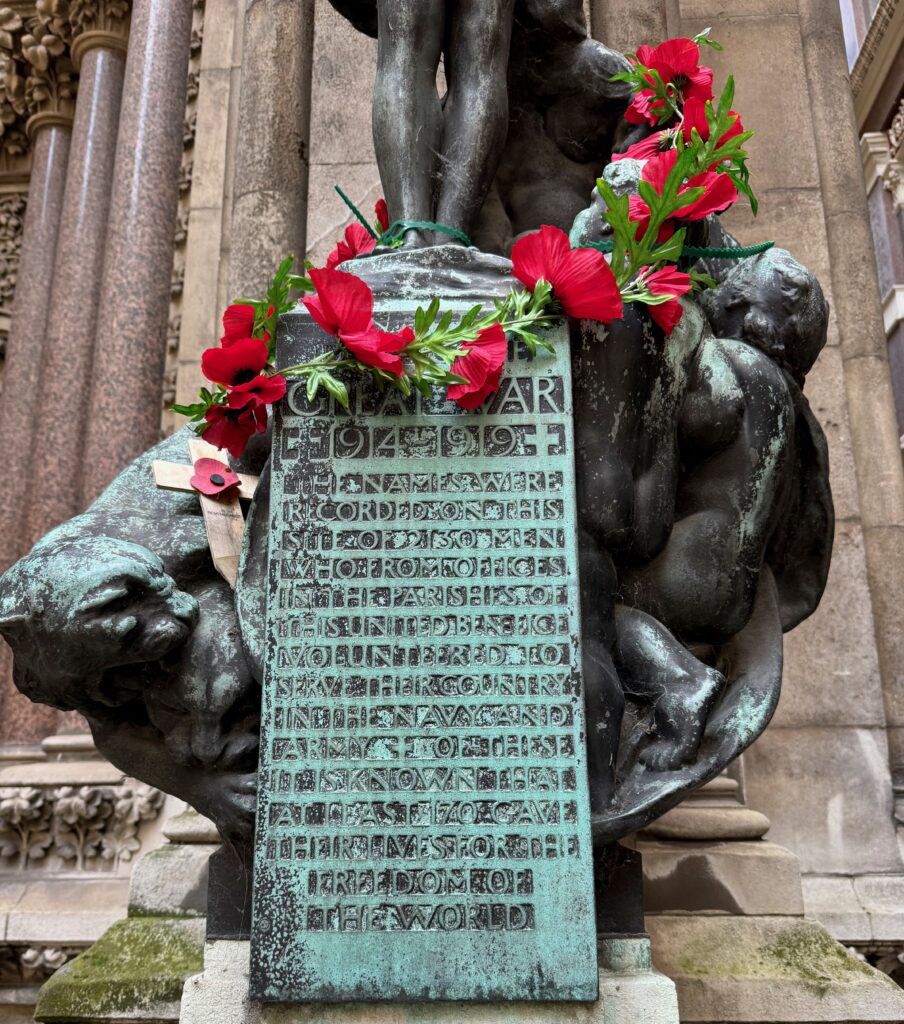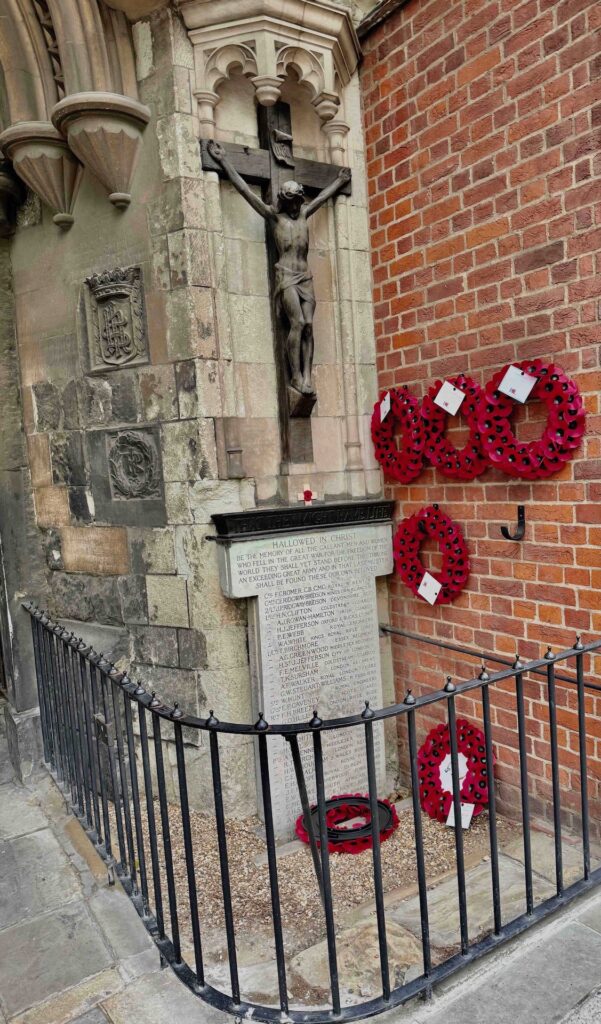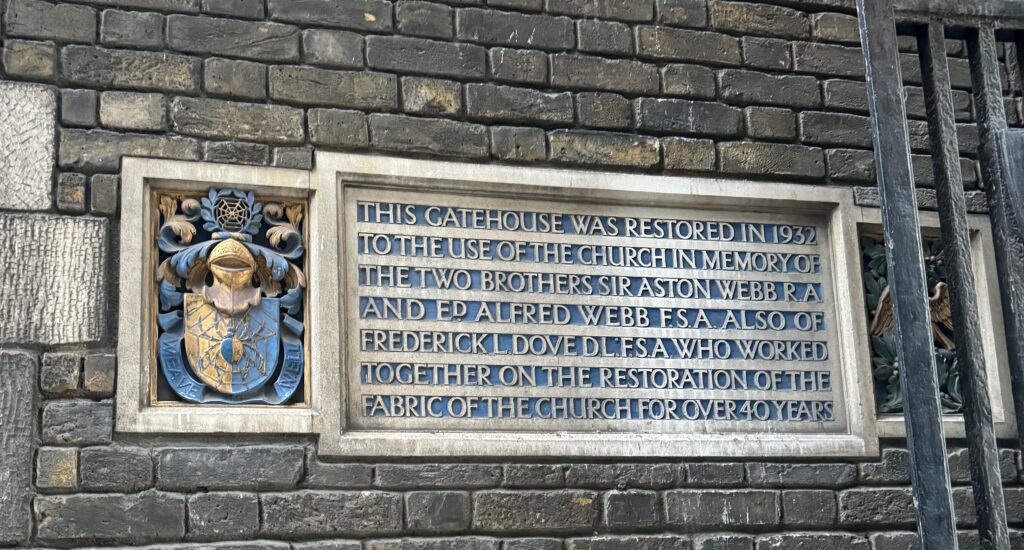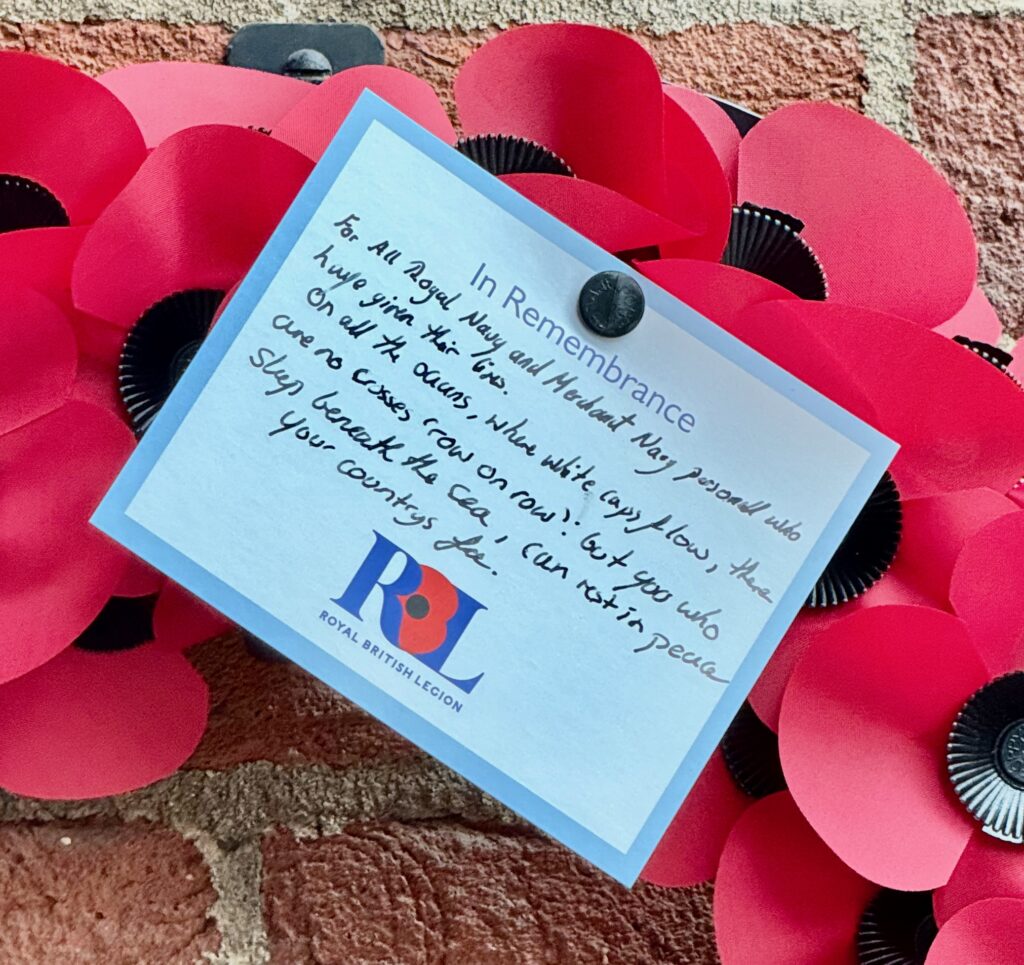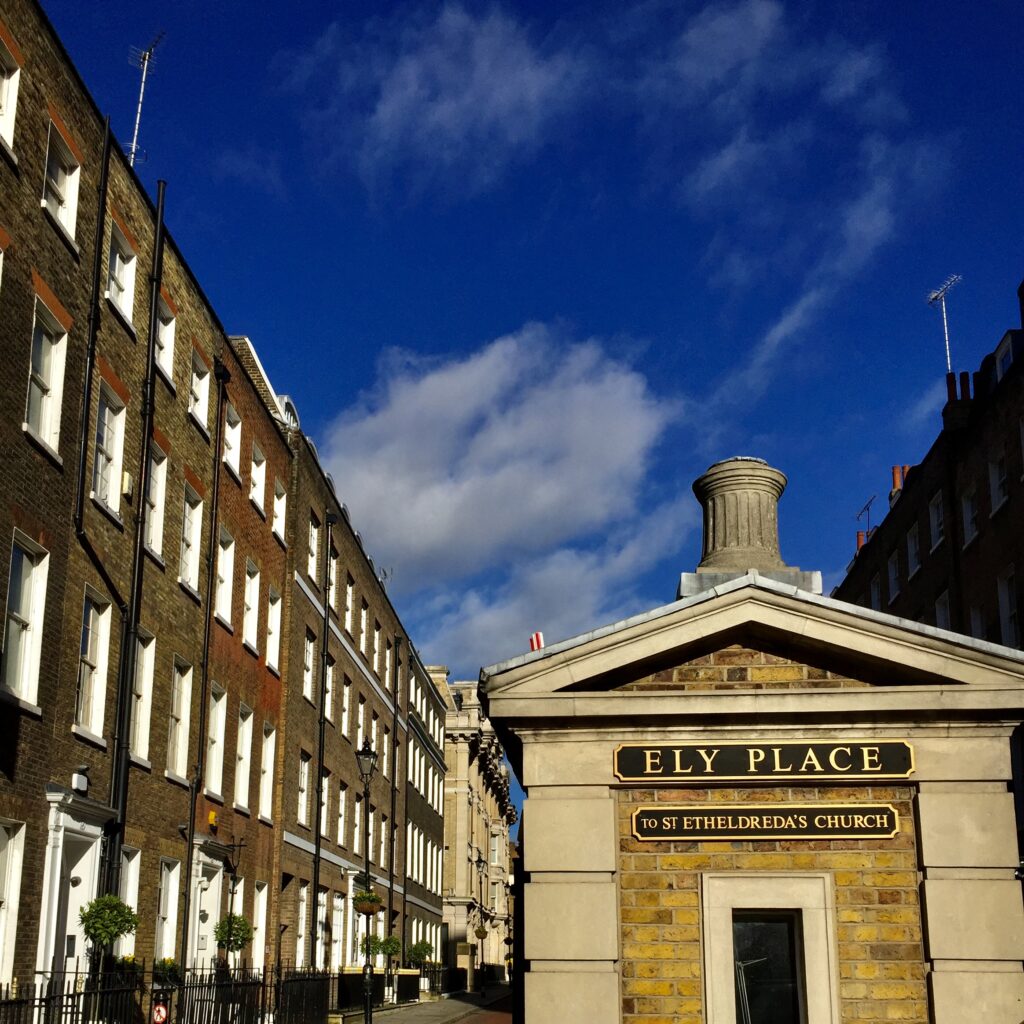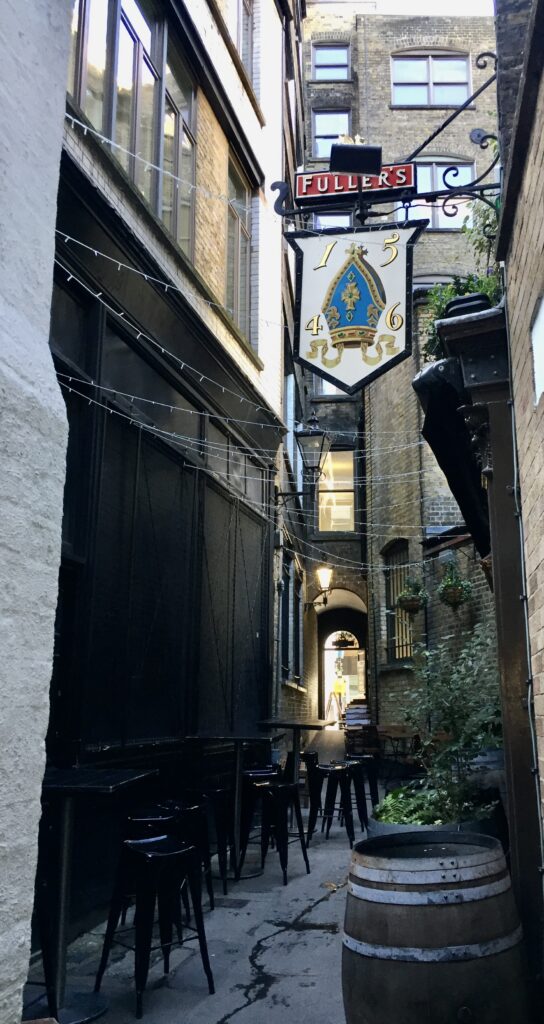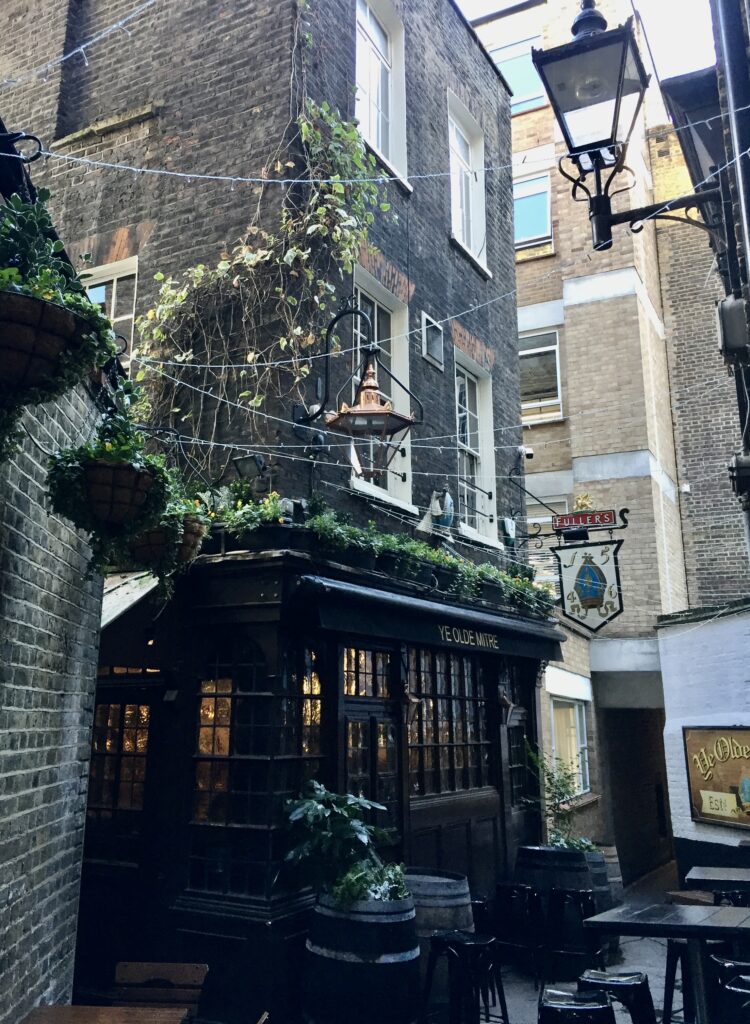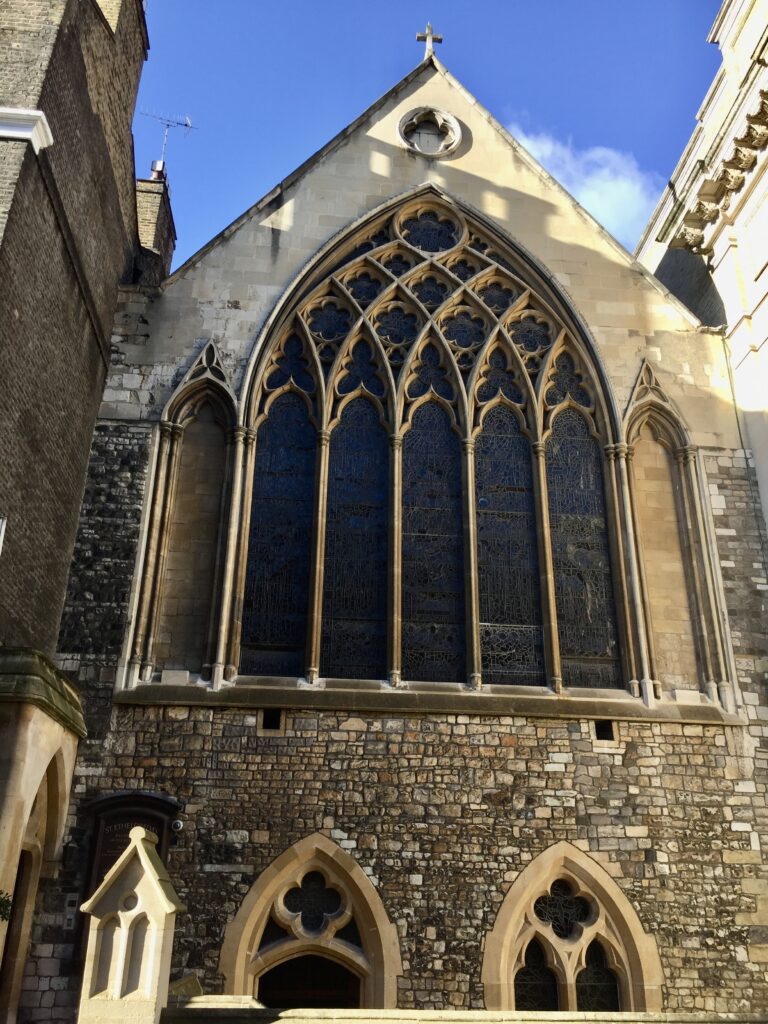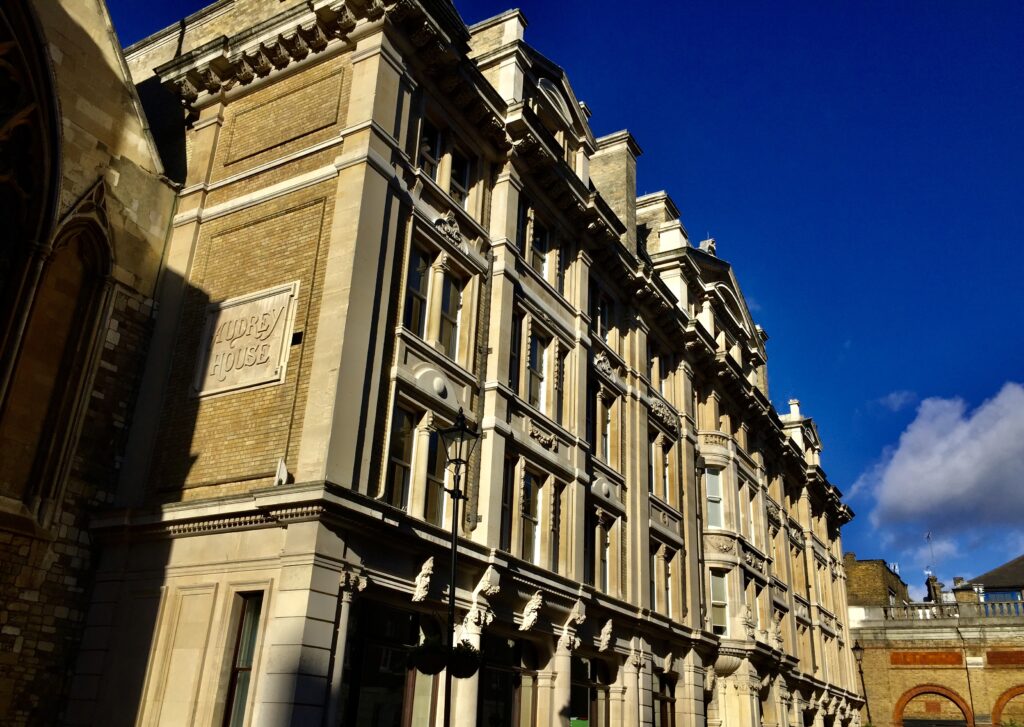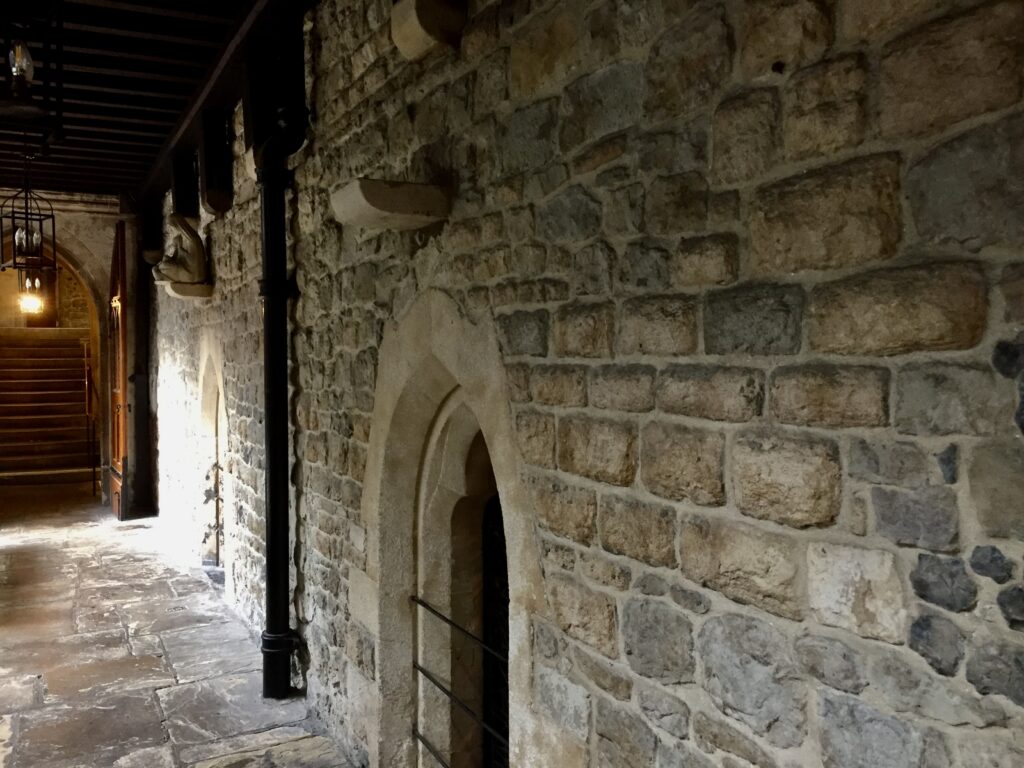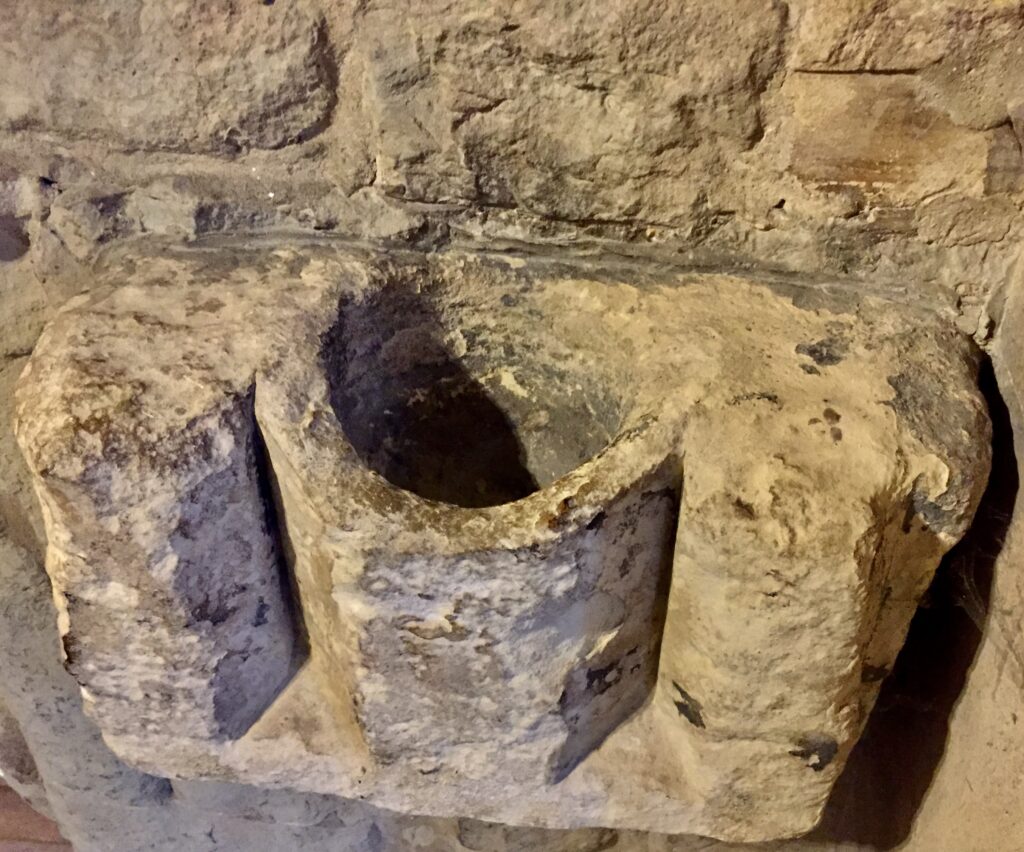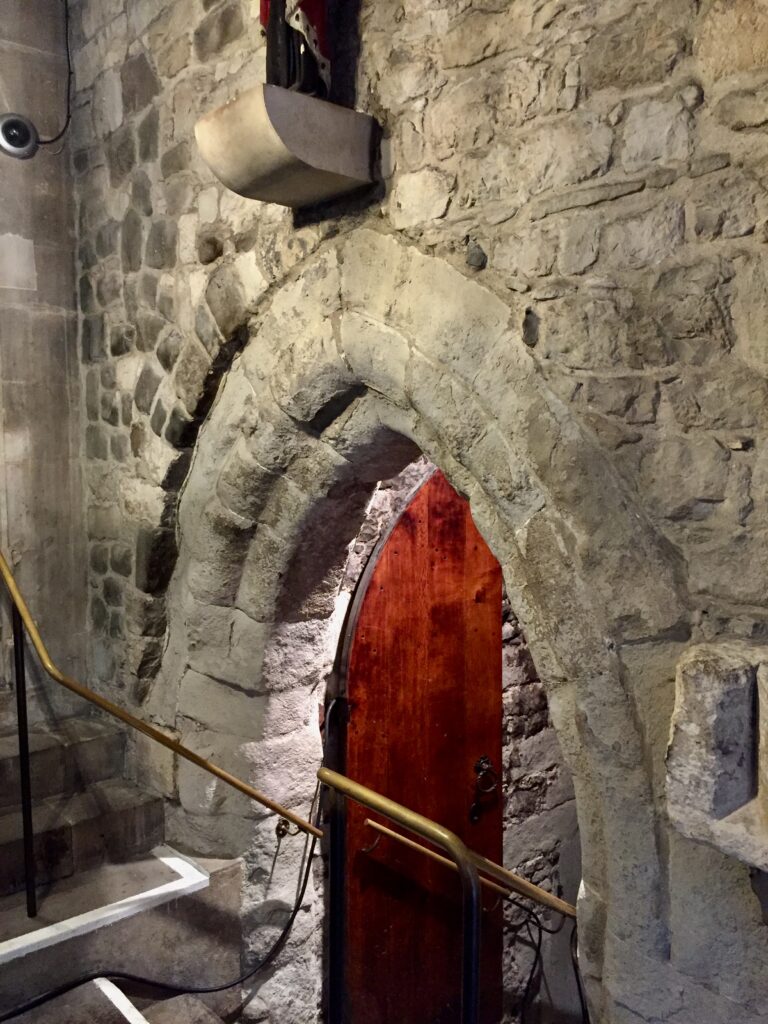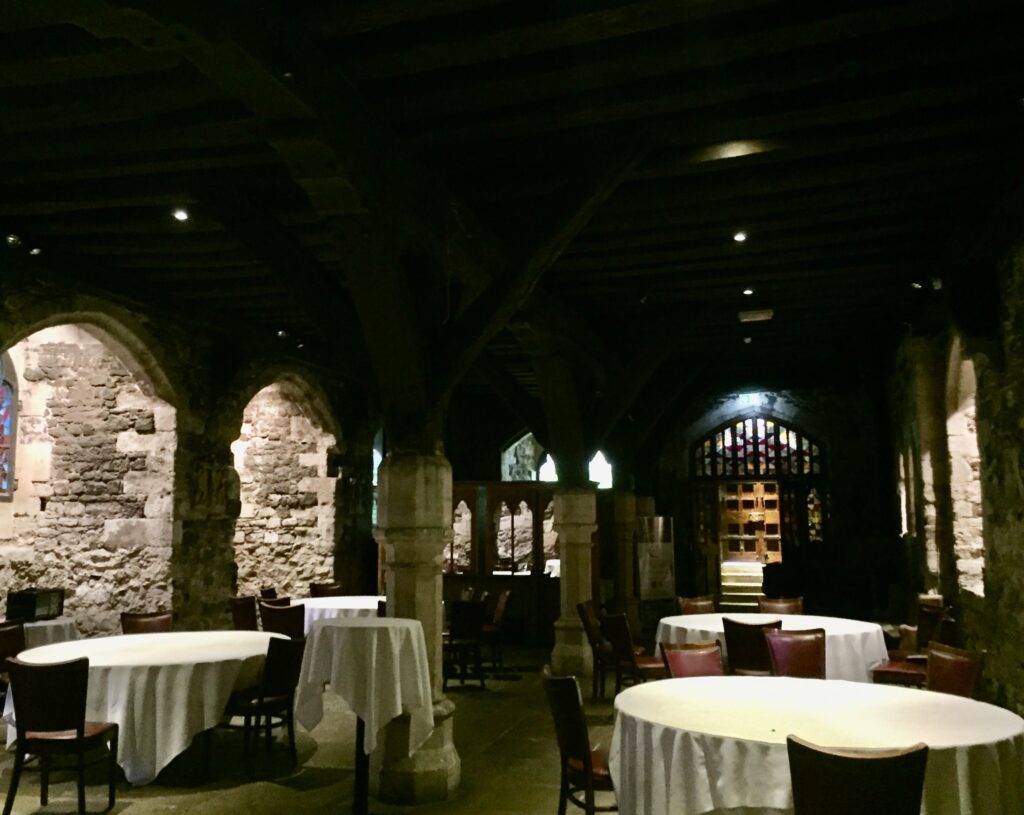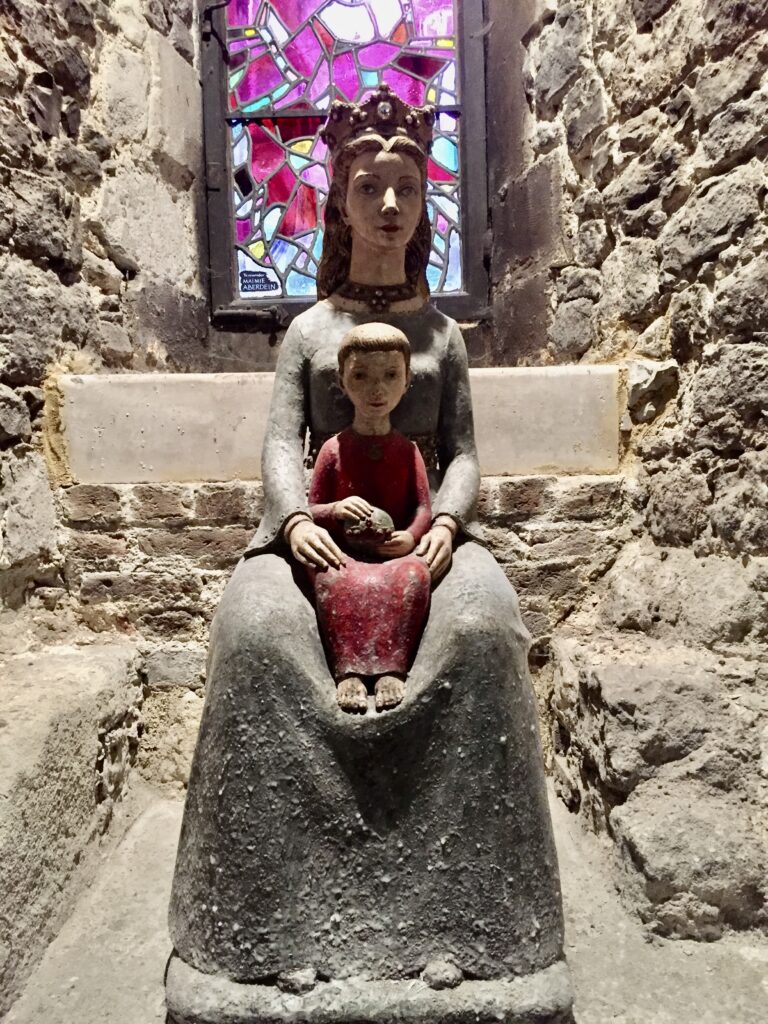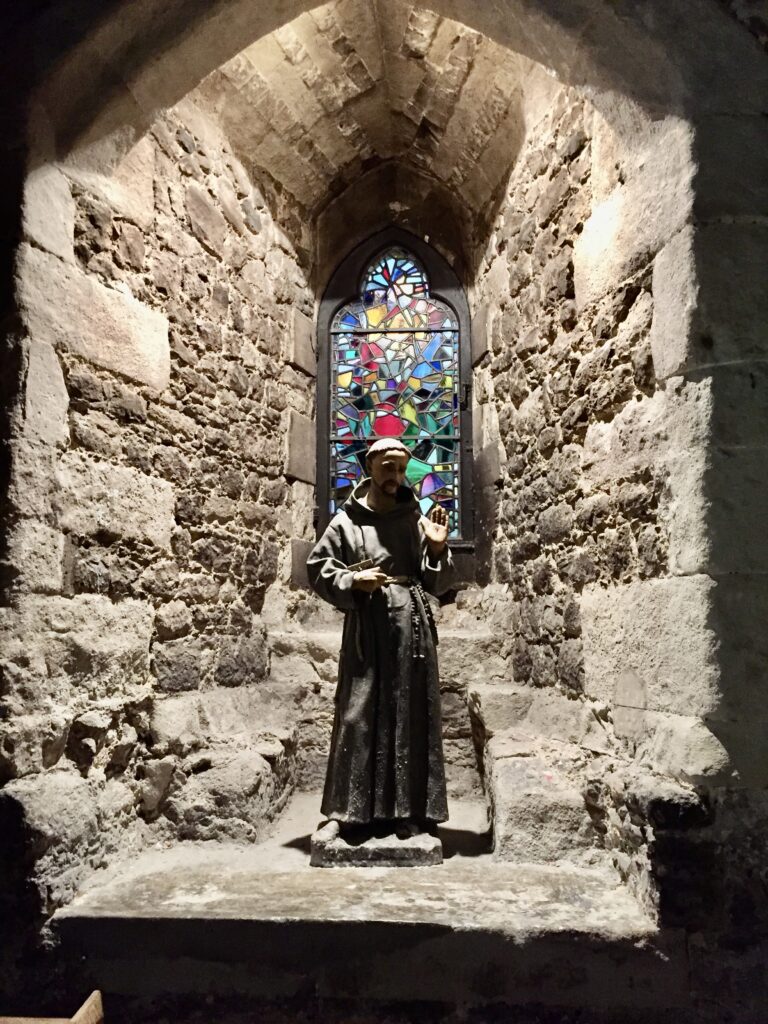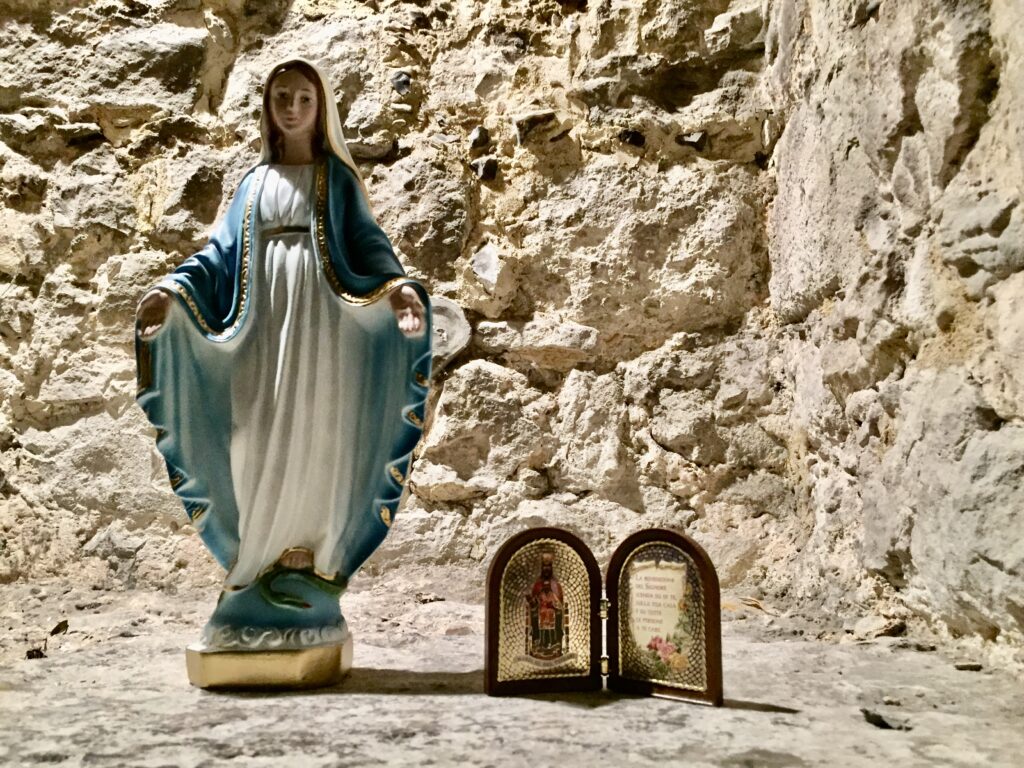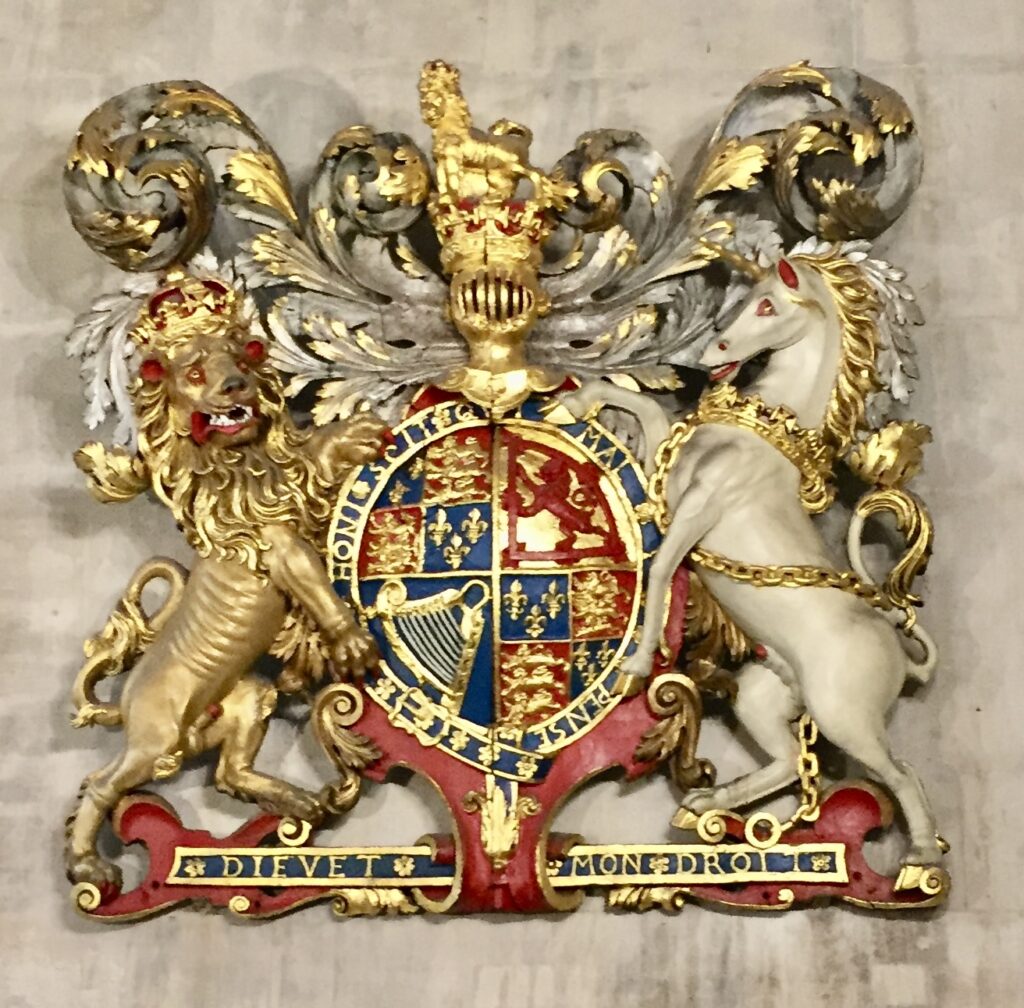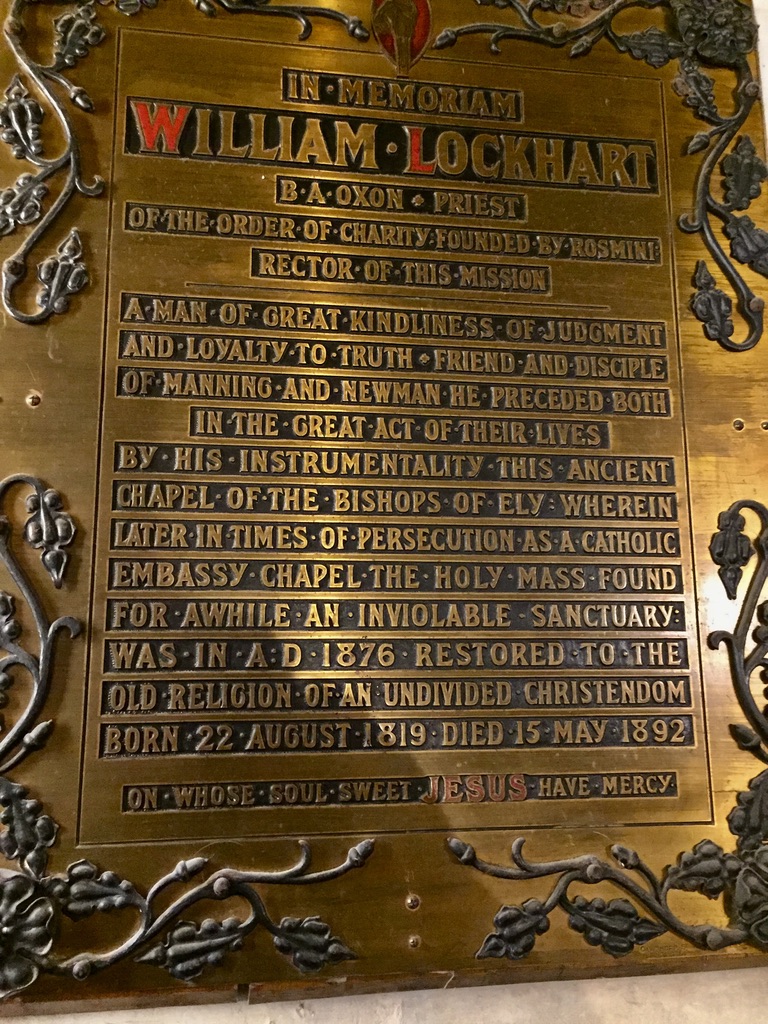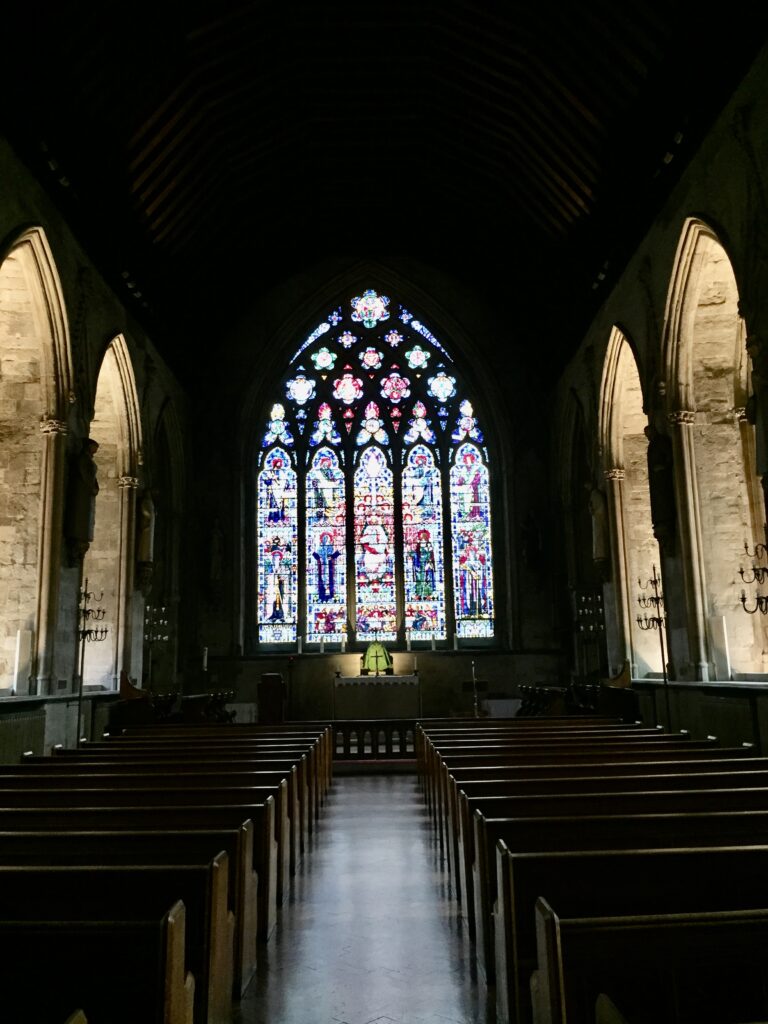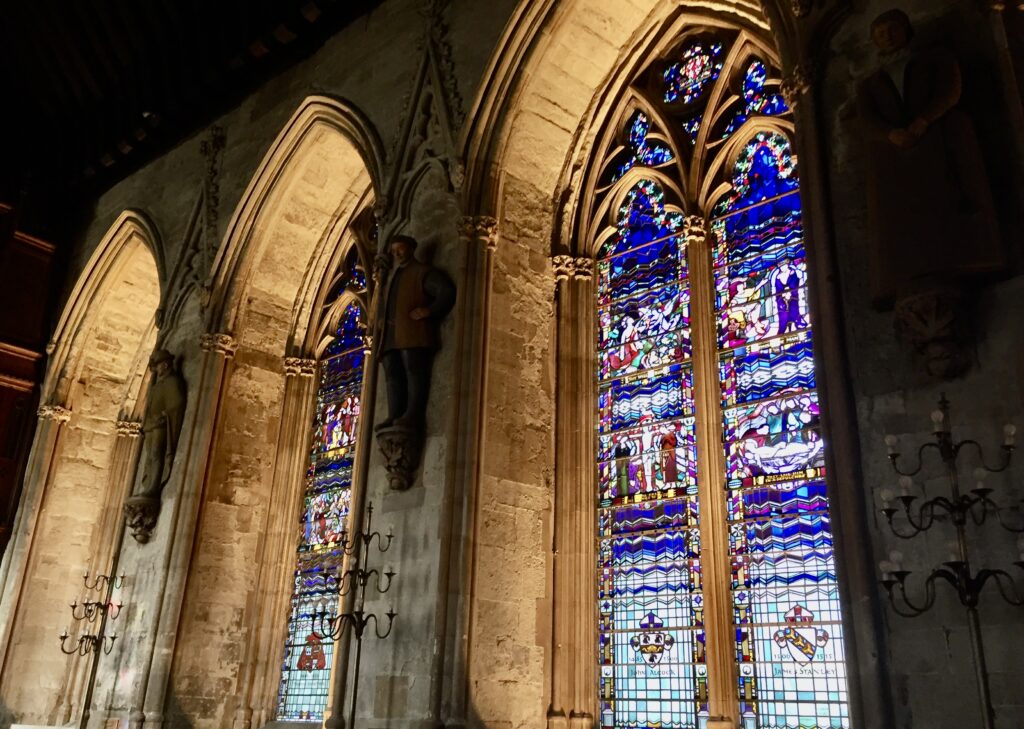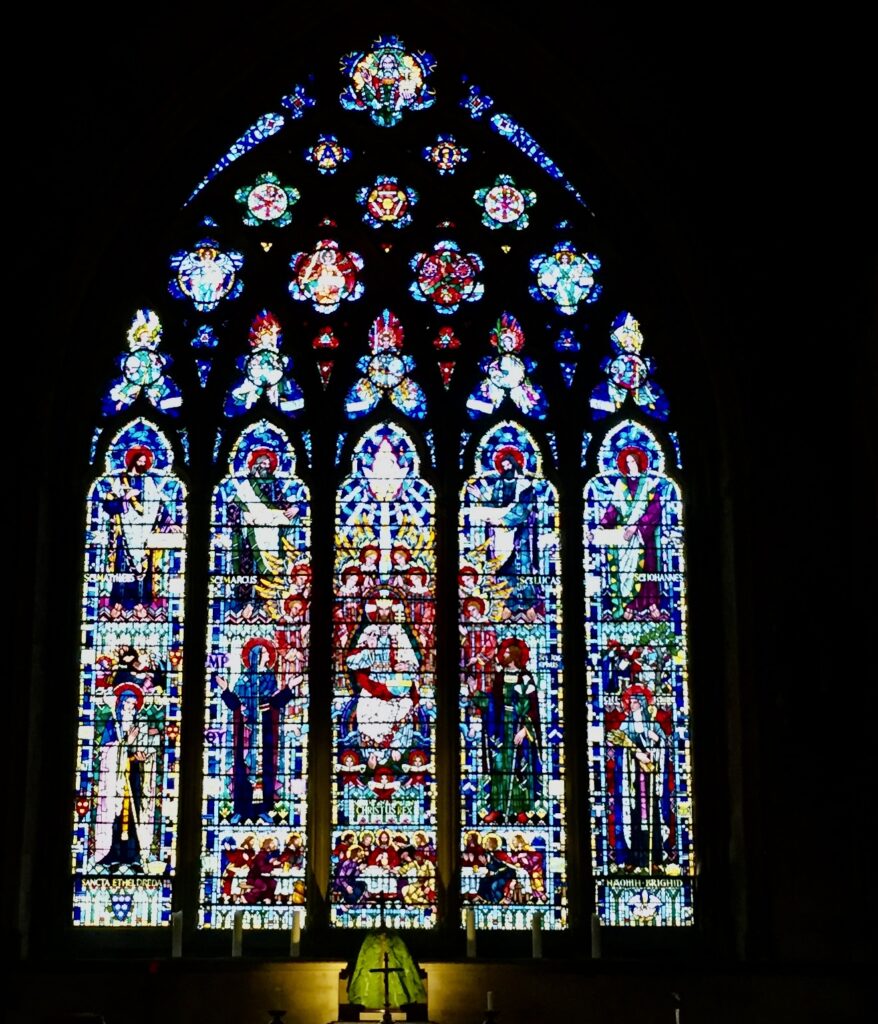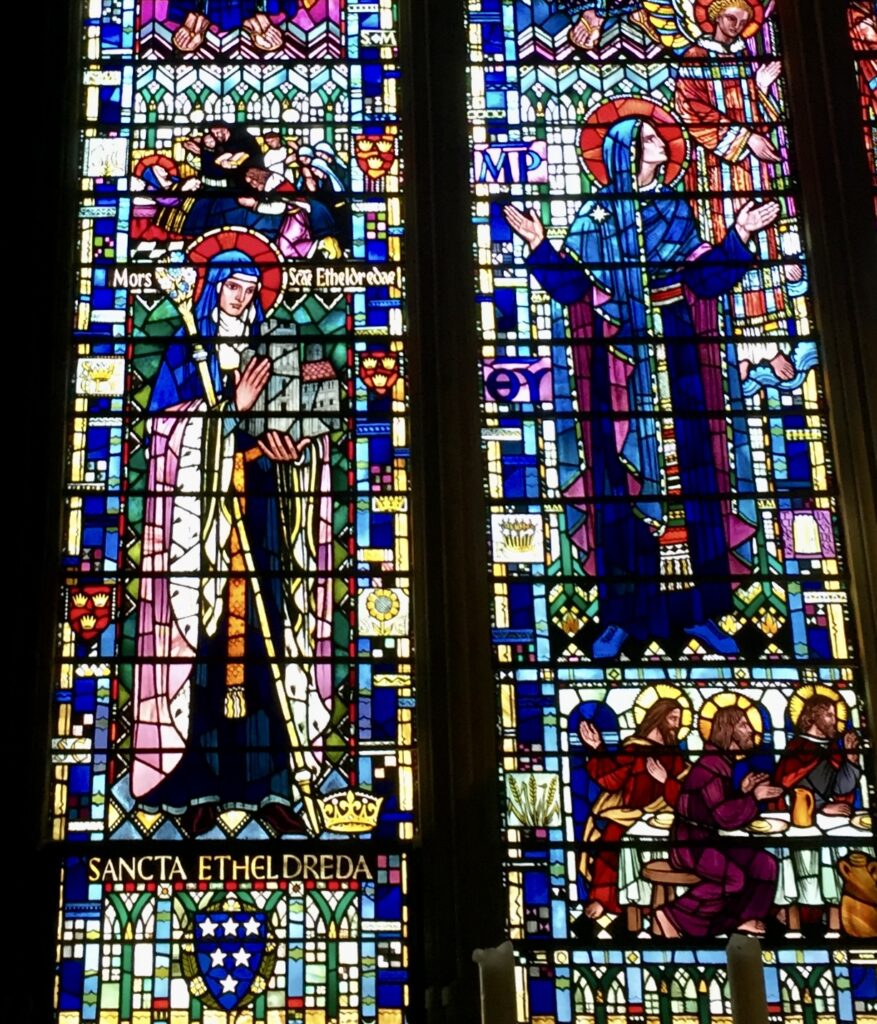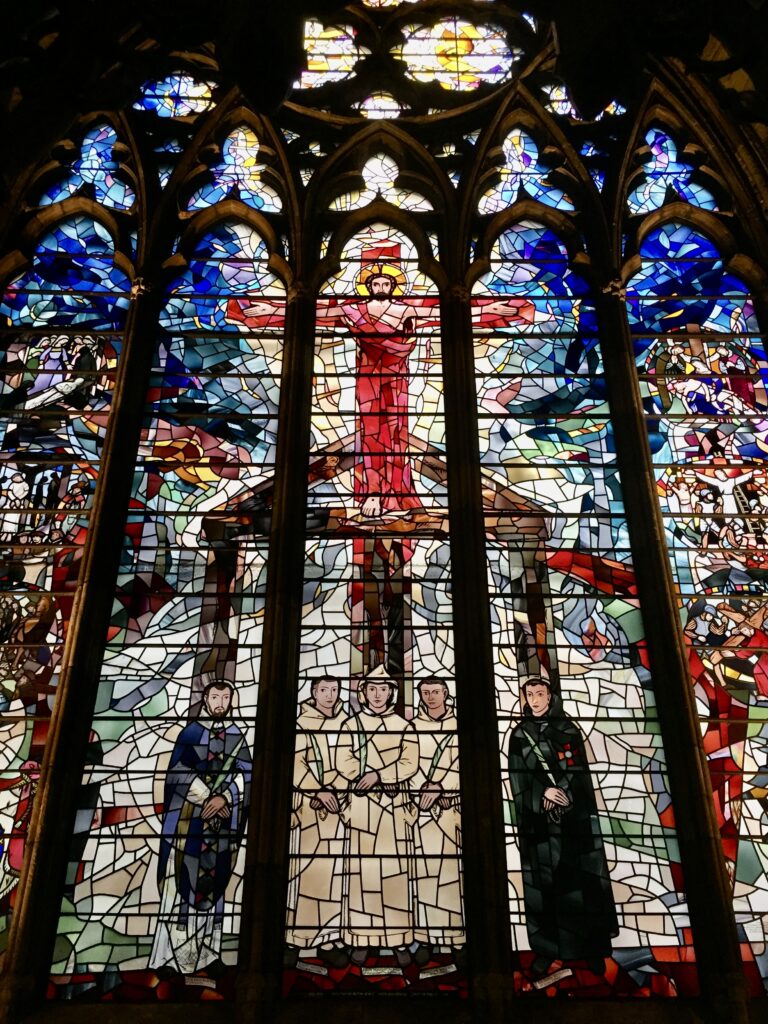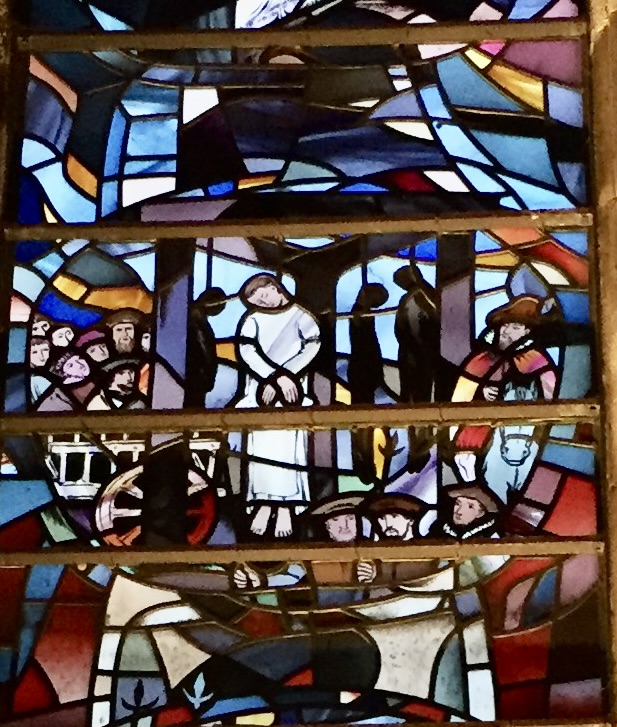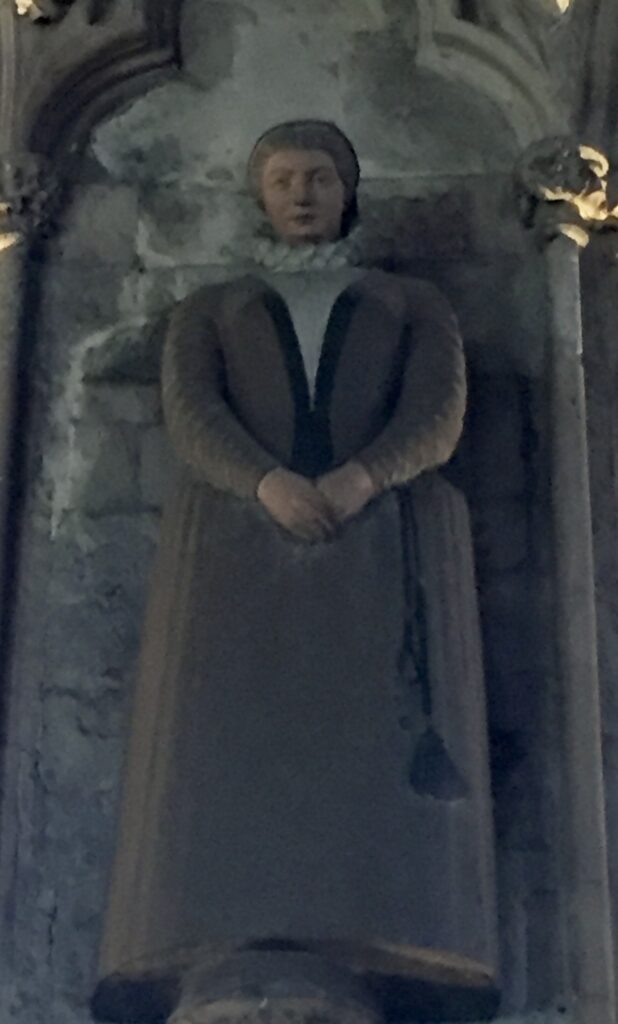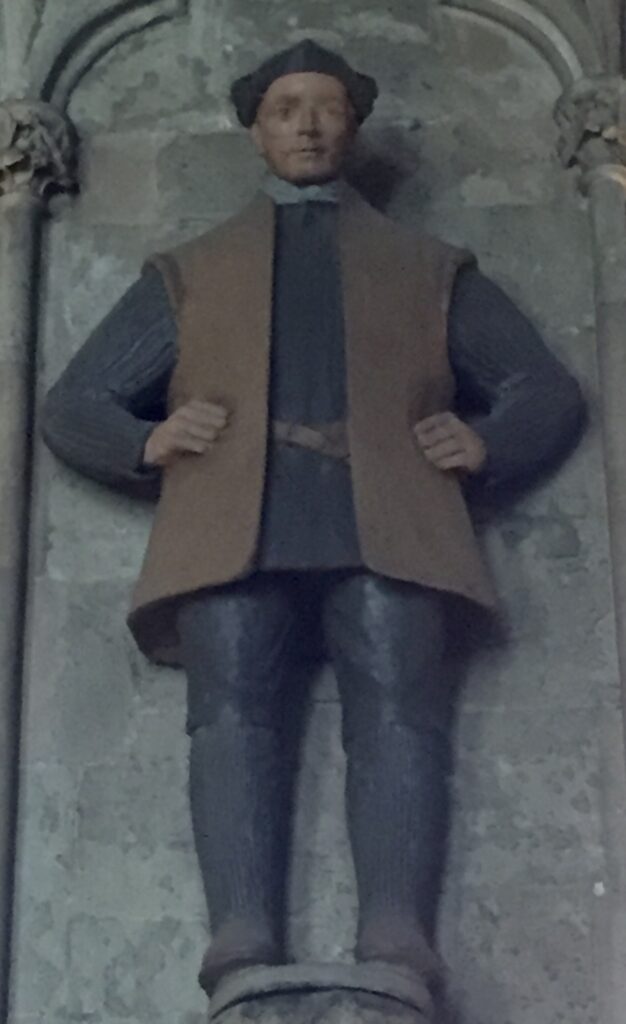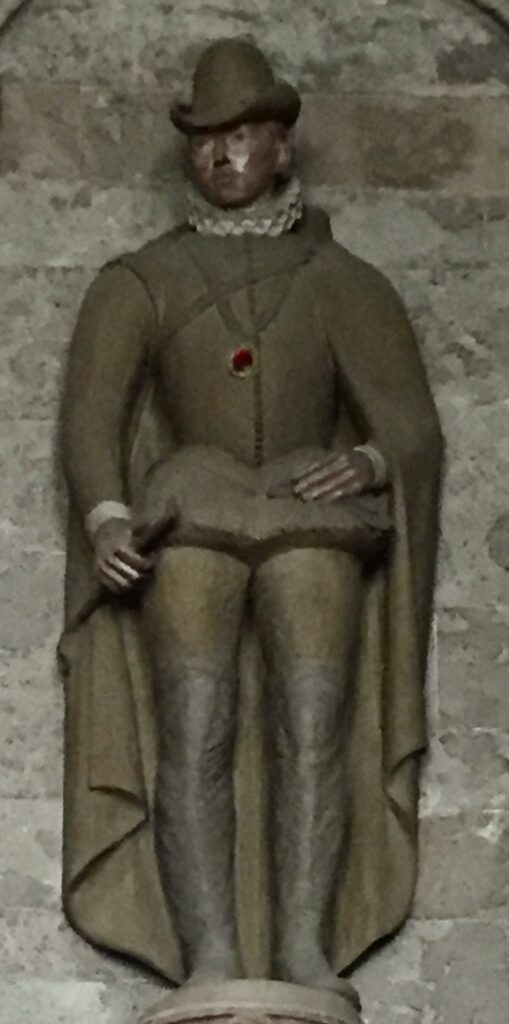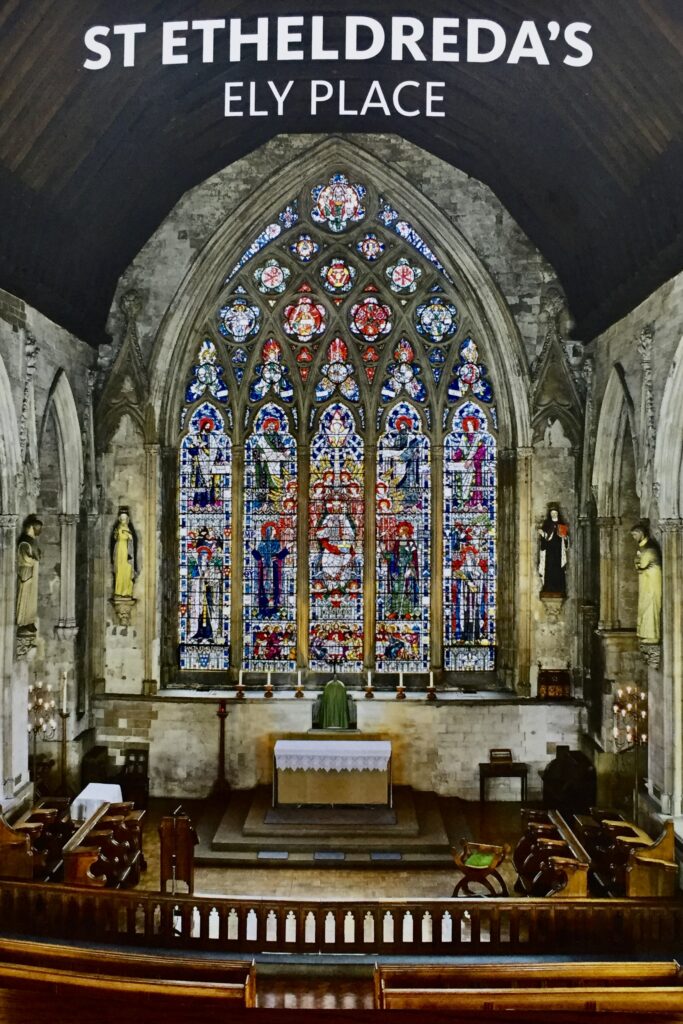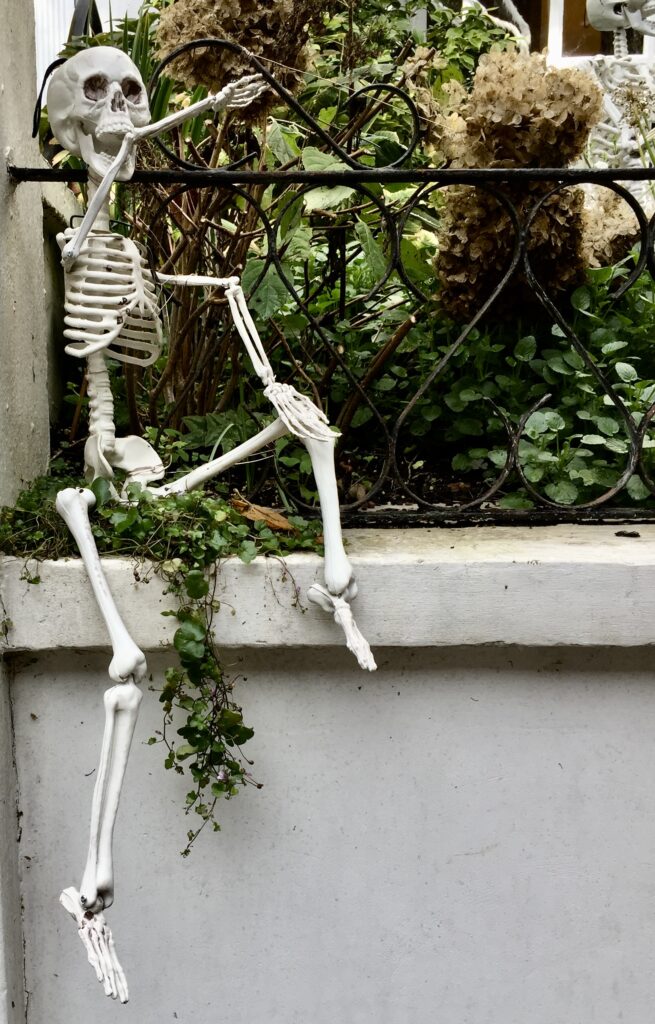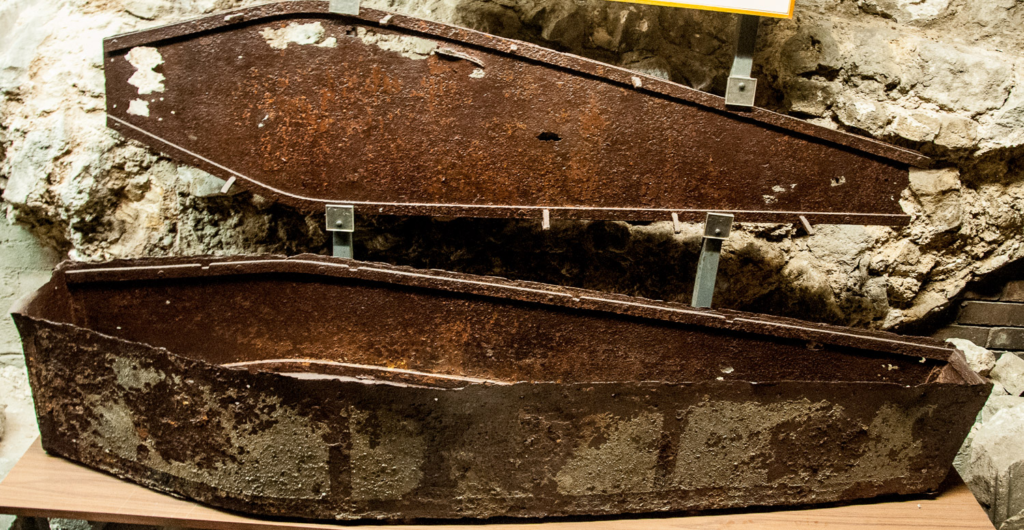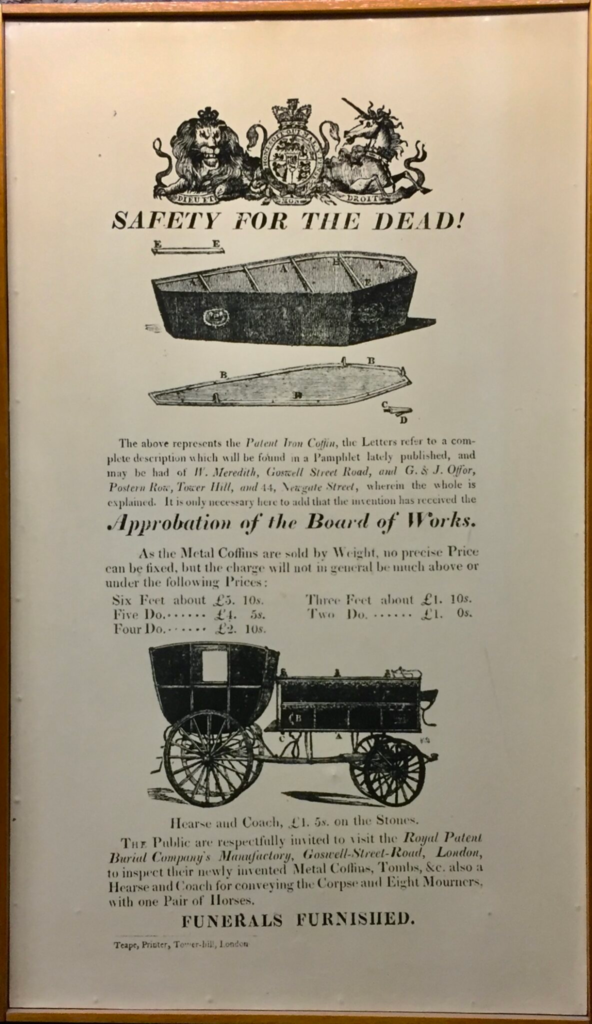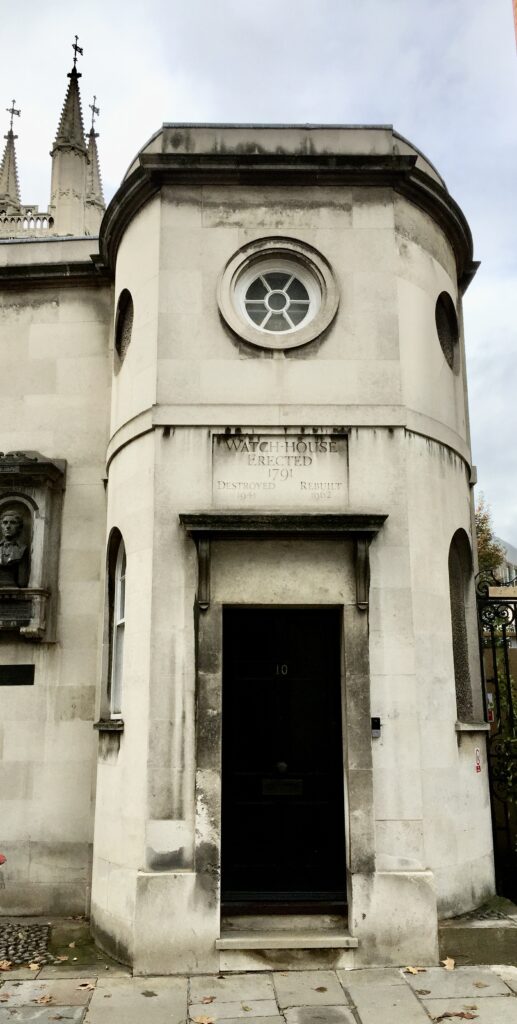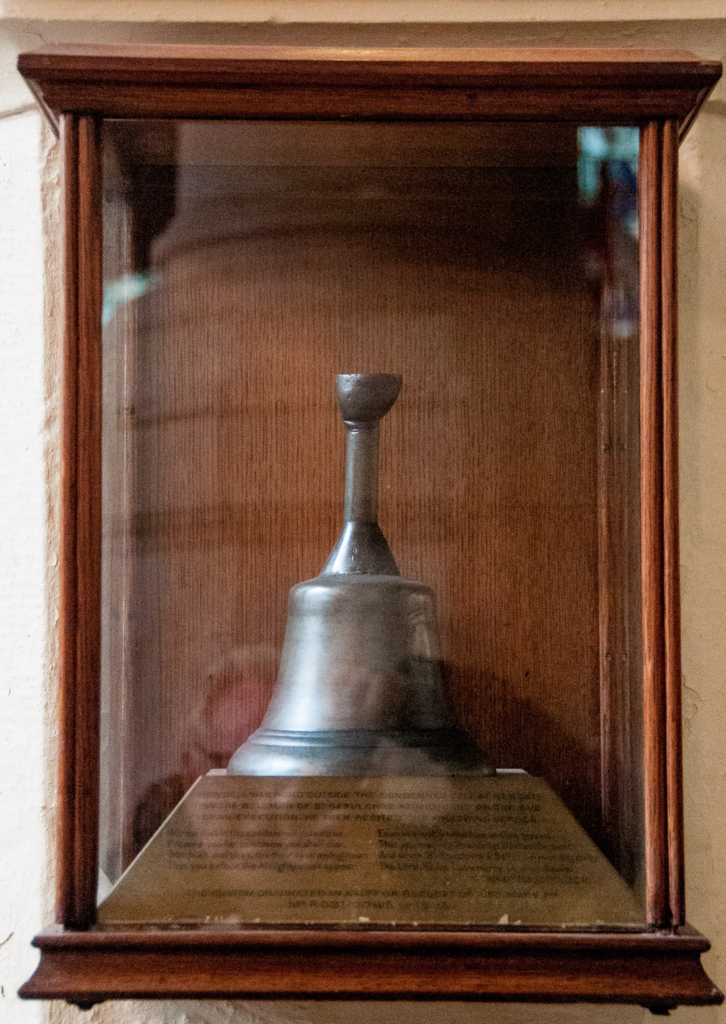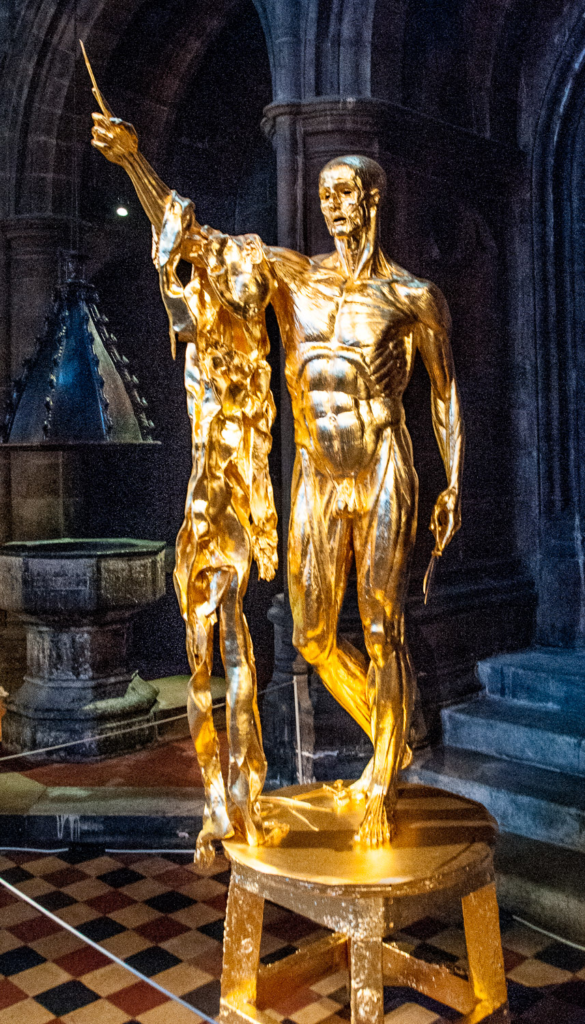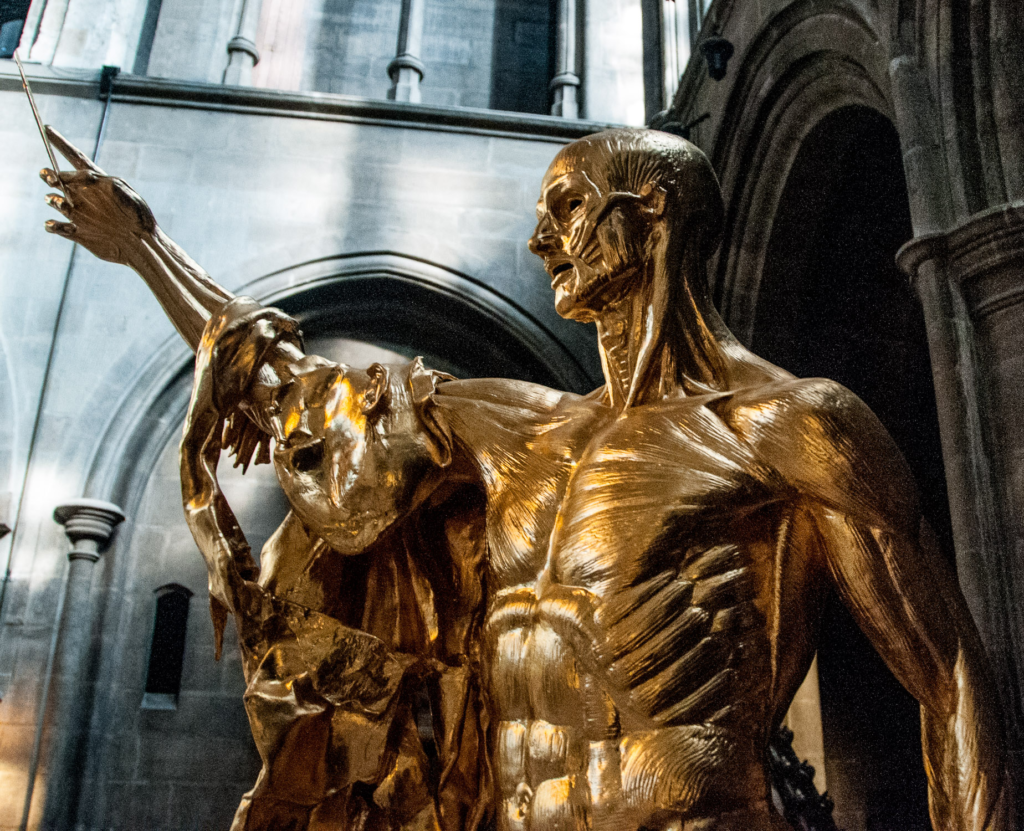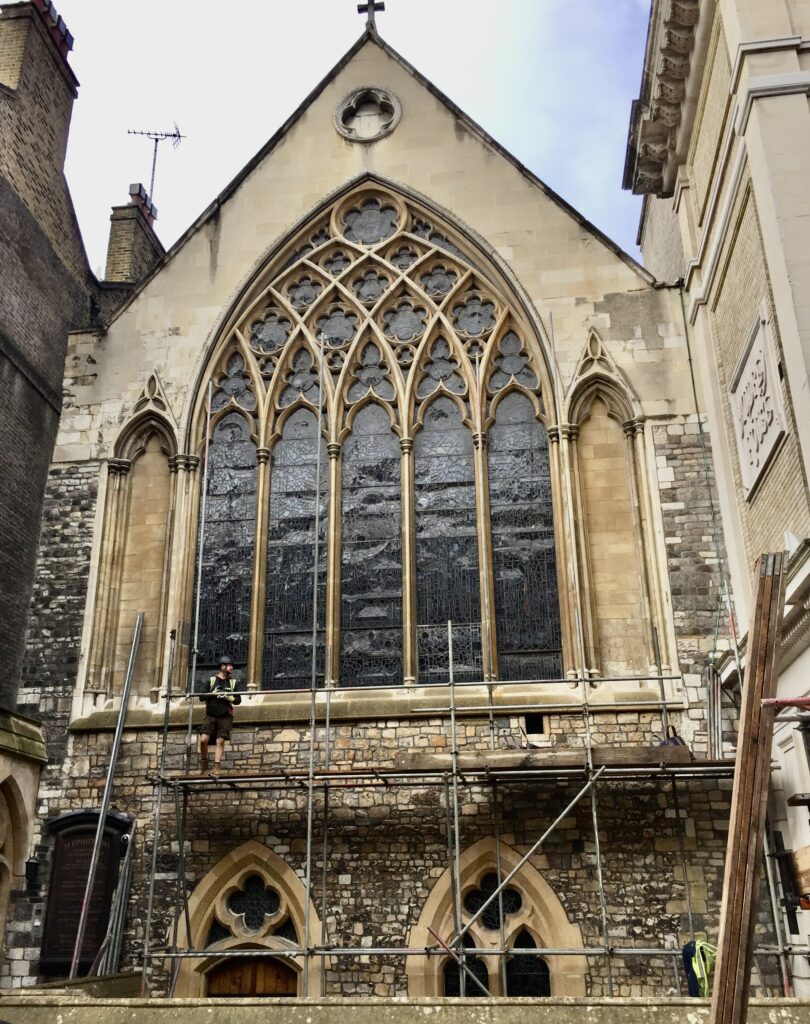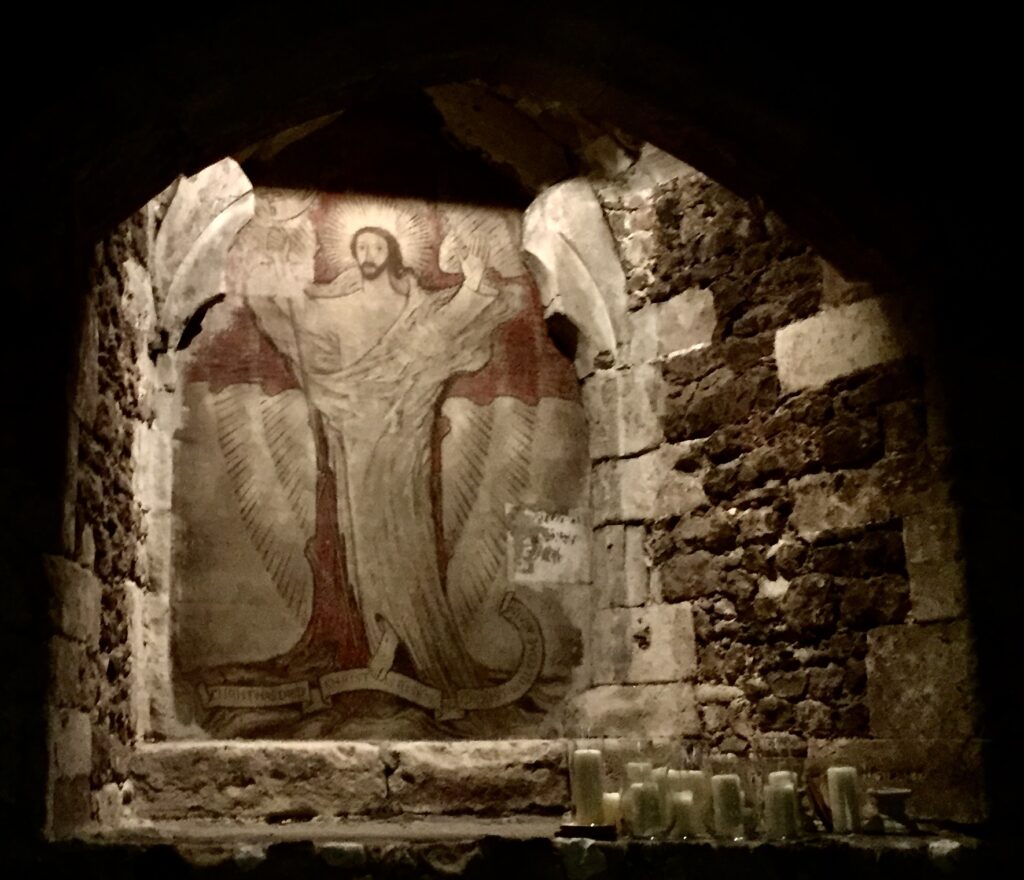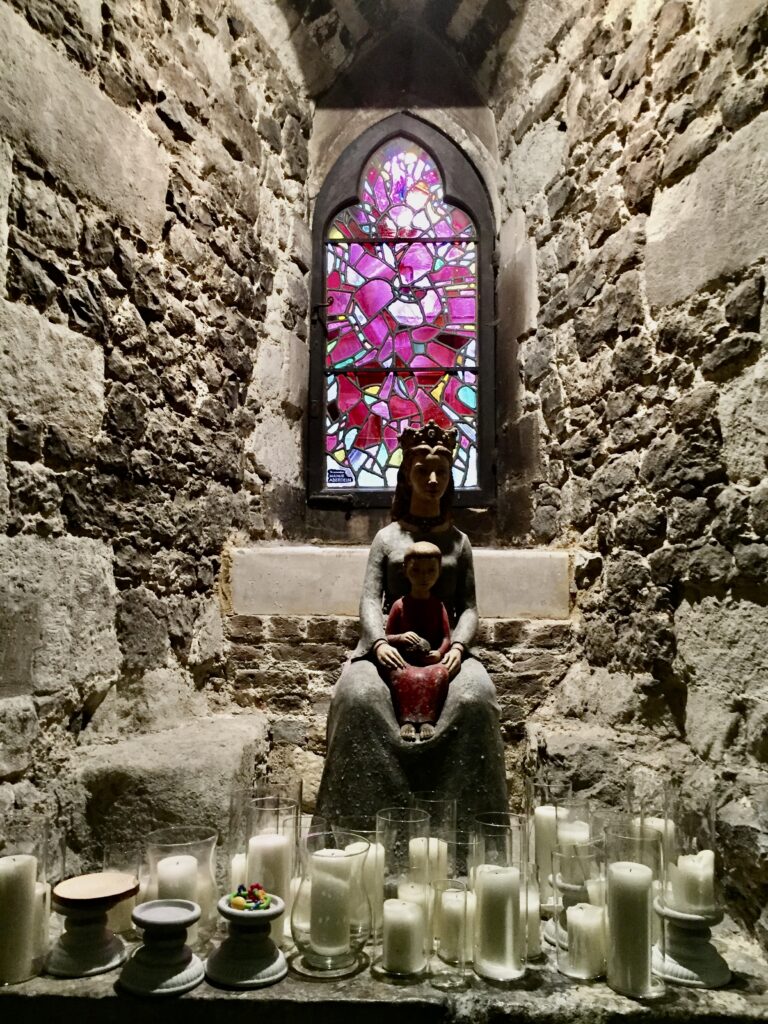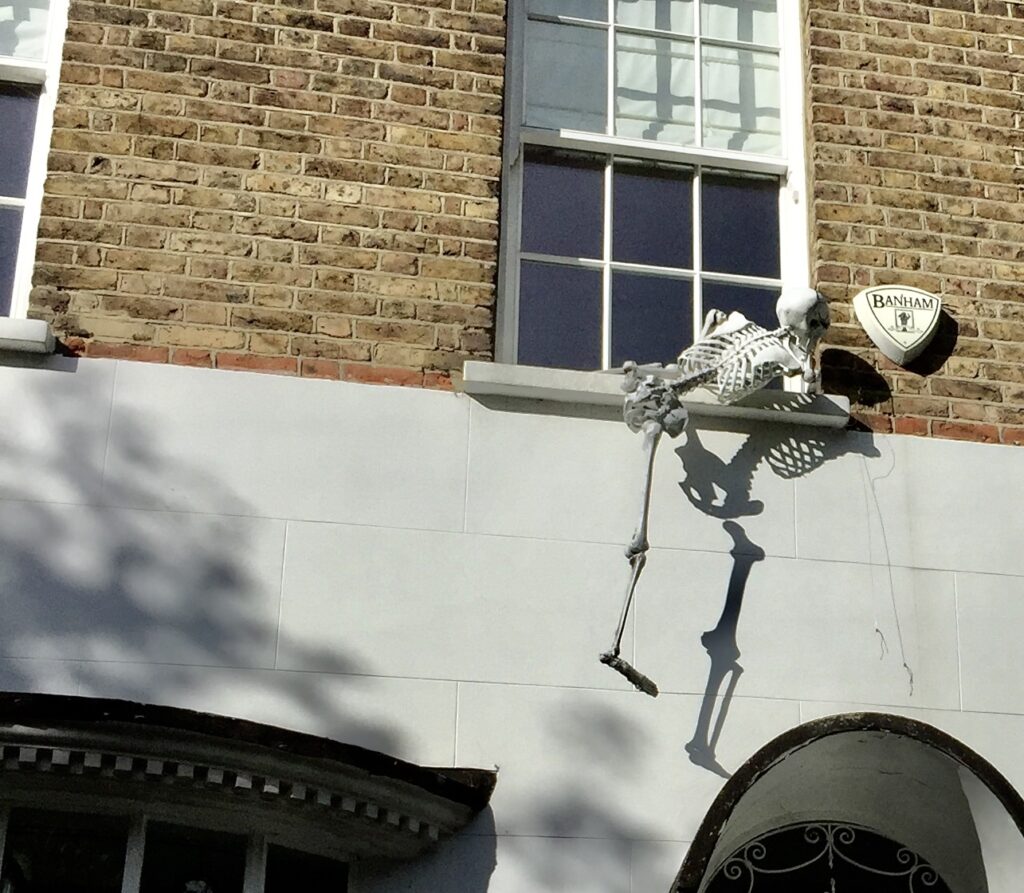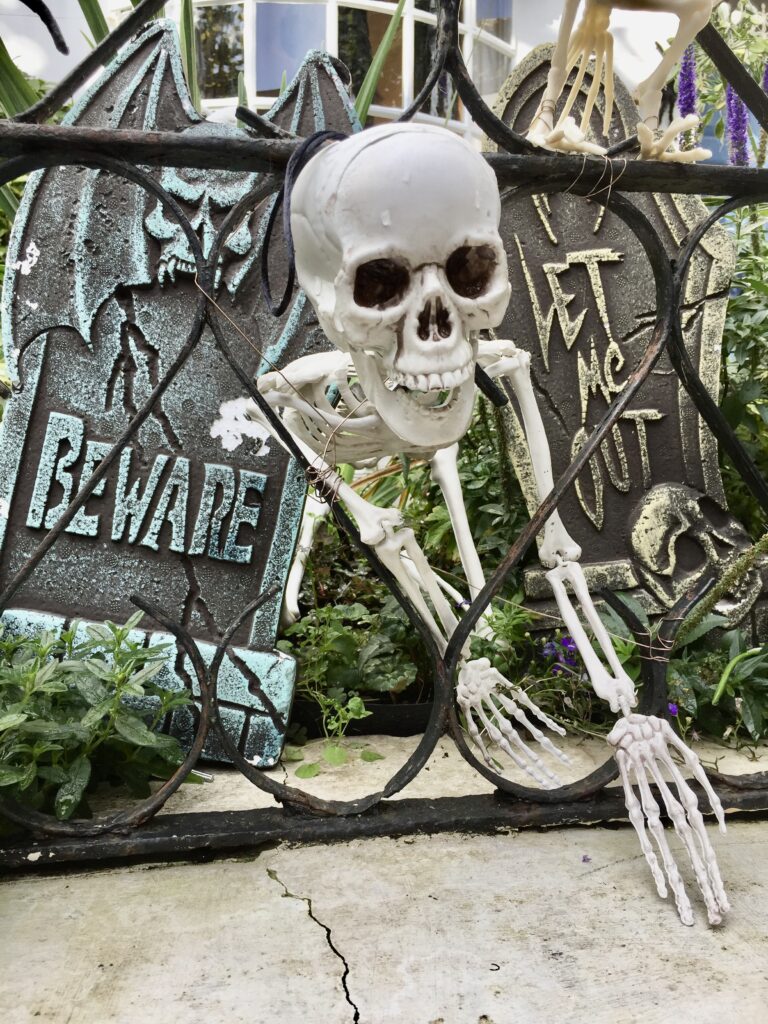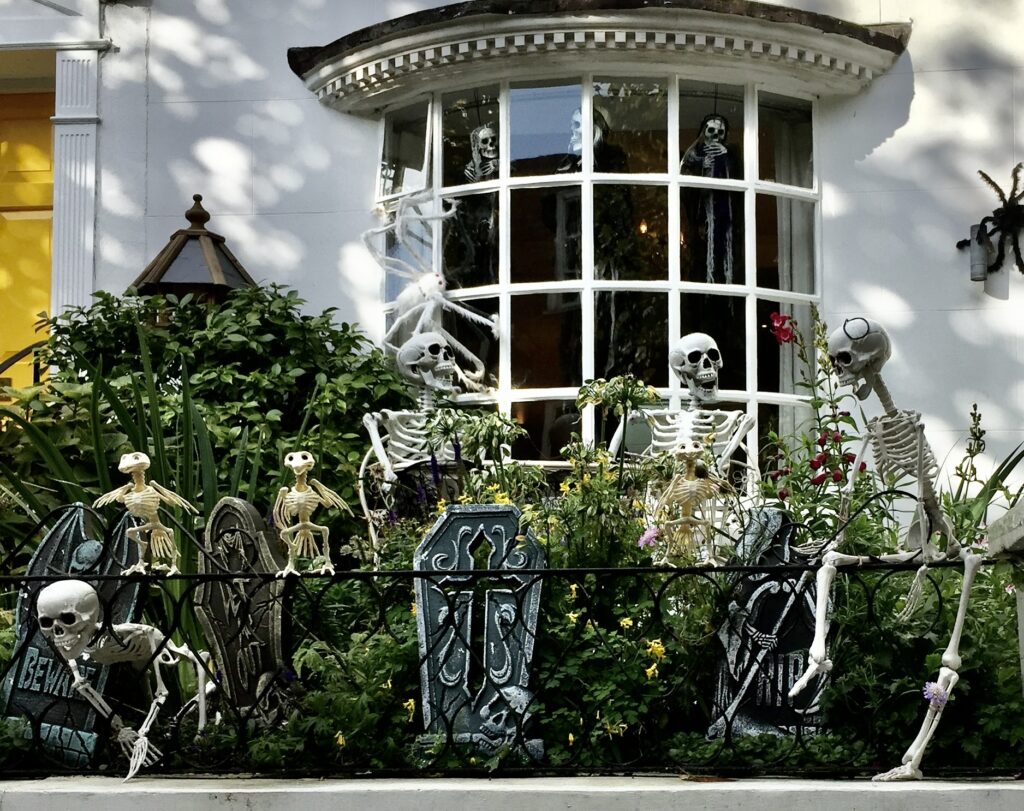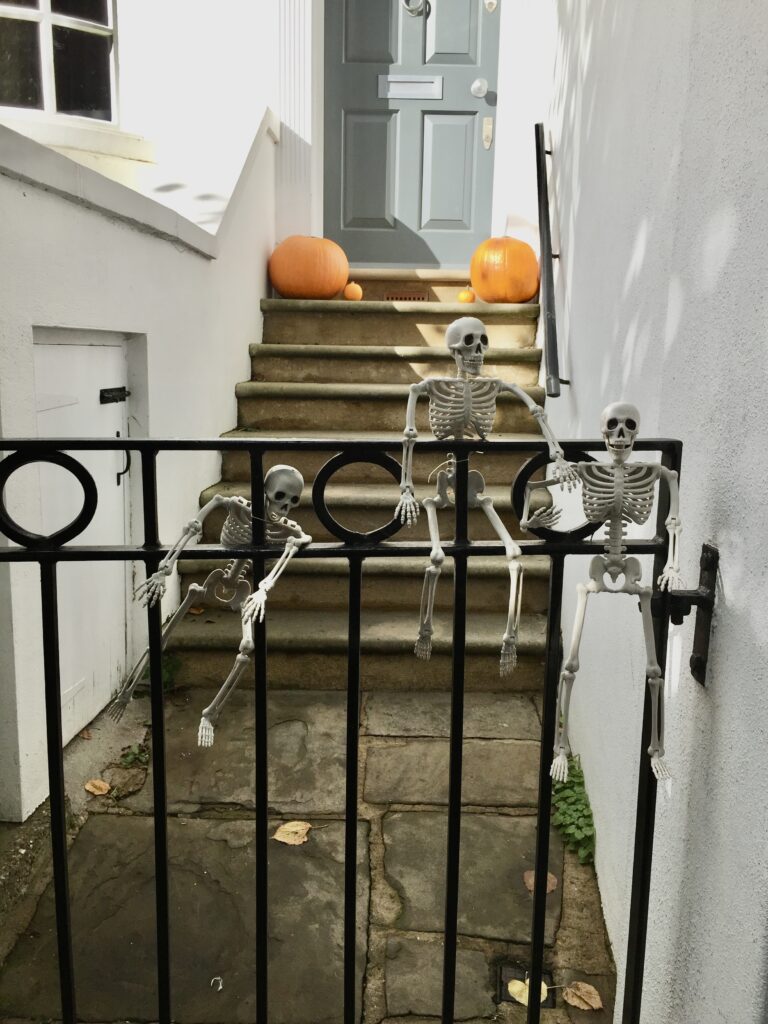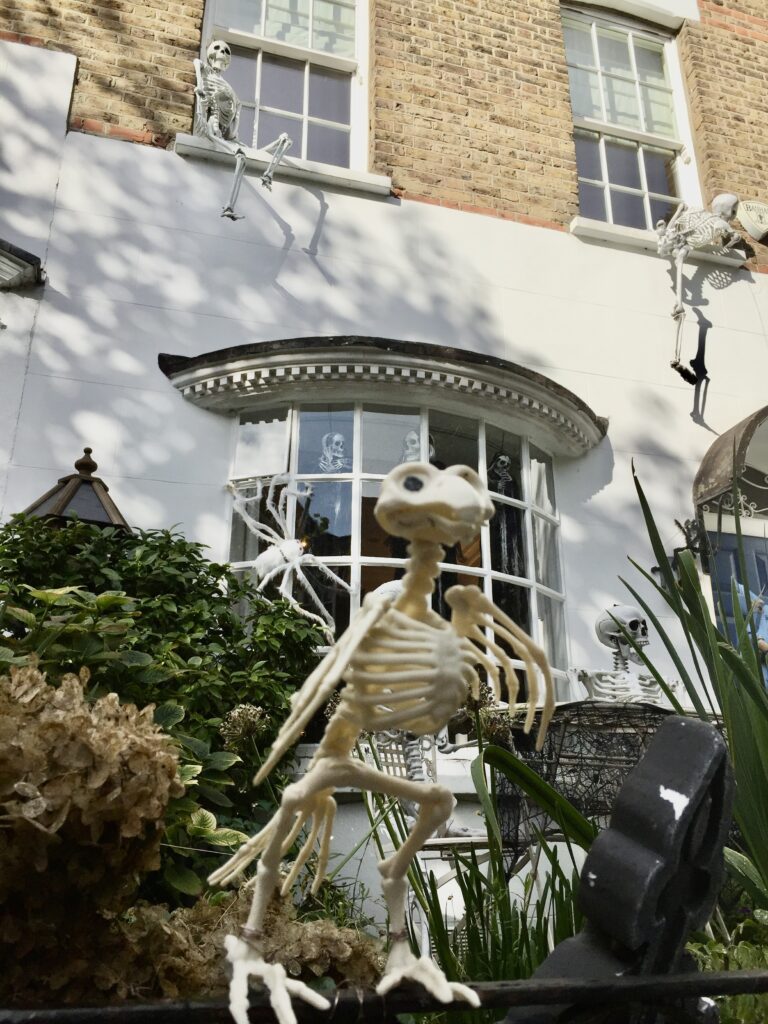Poor St Bartholomew the Less has had a tough time (EC1A 9DS). Designated ‘the less’ to distinguish it from its better known namesake nearby, it has also had to be substantially rebuilt a number of times including the need to repair damage inflicted in the Blitz. Nonetheless, it is a fascinating place containing many interesting historical monuments.
To find its modest doorway you must enter the grounds of St Bartholomew’s hospital through the Henry VIII gates and look to your left. Inside a rather spooky white hand directs you up stairs to the main body of the church …

It was once a parish church in its own right, the parish boundary being the walls of the hospital. The parishioners were made up of the hospital staff and patients and at one time attendance at services was compulsory for all who were fit enough. It was the only parish of this nature in existence but since 2015, however, it has become part of the Parish of St Bartholomew the Great.
There are many features to admire but, for reasons of space, I have tried to pick some of the most interesting and will look at others in a future blog.
This stained glass commemorates the founding of he monastic complex of St Bartholomew in 1123. The person responsible was Rahere, a courtier to Henry I, who was inspired by a vision of the saint whilst recovering from a serious illness …
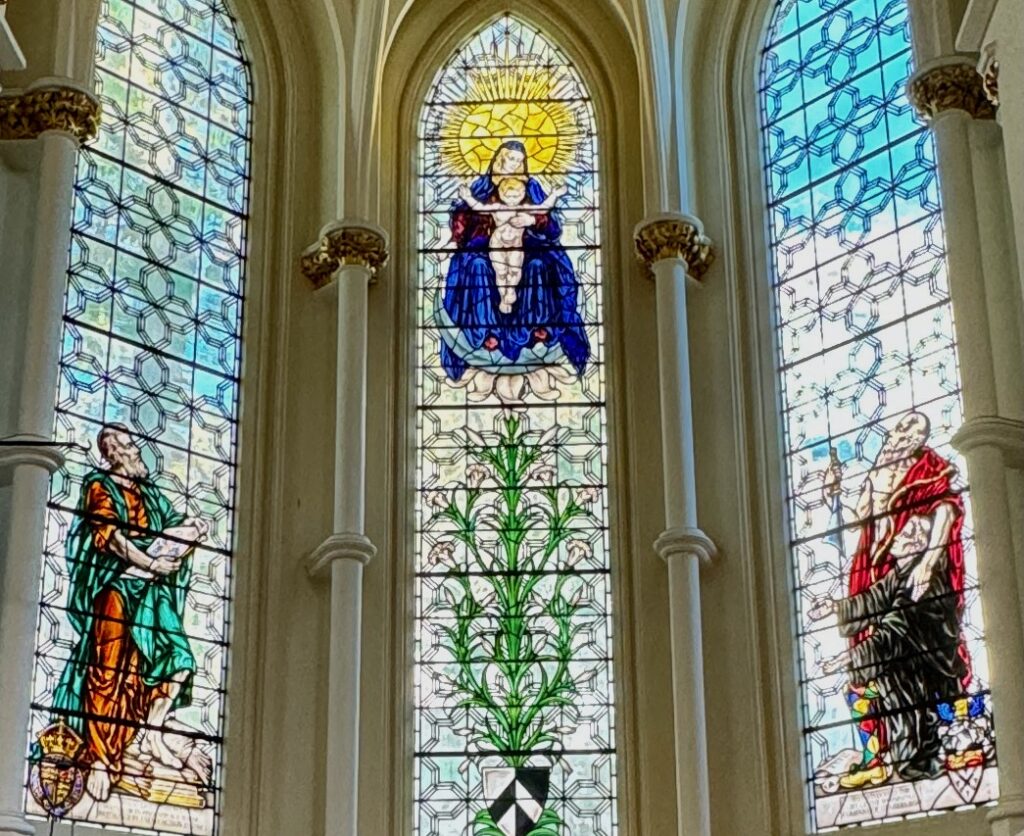
Rahere is shown kneeling and beneath his cassock is rather a surprise. He is wearing some very colourful tights, a reference to the fact that he’s often referred to as a minstrel or jester as well as a courtier …
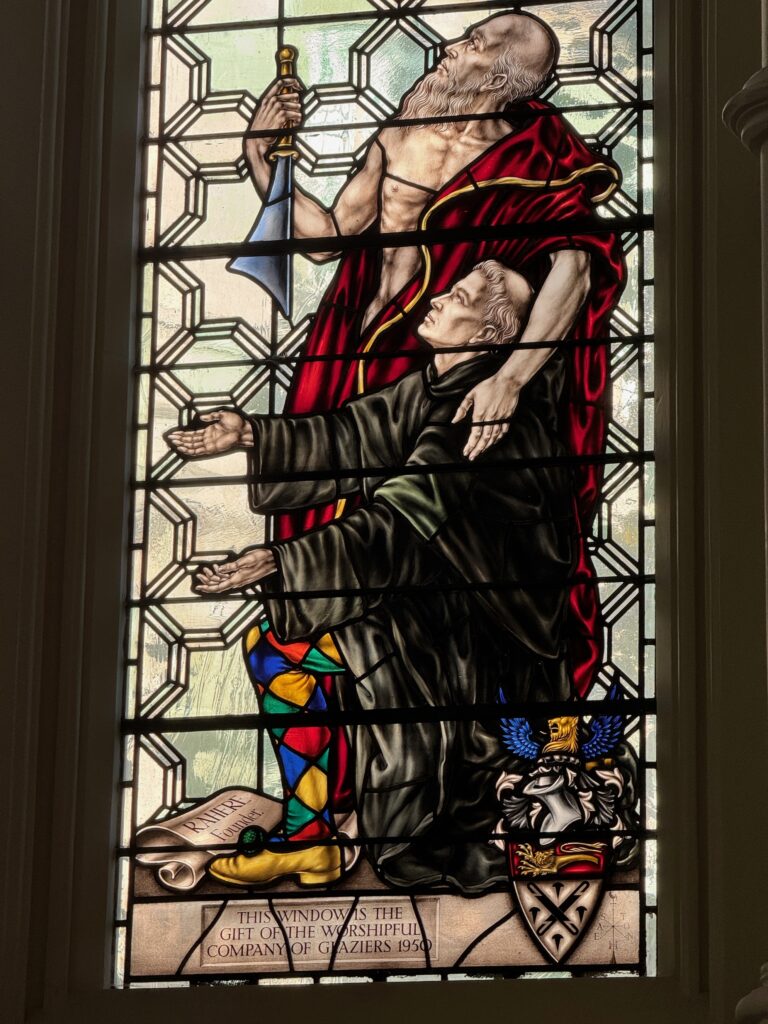
High up on the south wall is the memorial to Robert Balthrope, Sergeant Surgeon to Queen Elizabeth I …

The inscription reads …
Here Robert Balthrope Lyes intombed,
to Elizabeth Our Queene
Who Sergeant of the Surgeons Sworne,
Neere Thirtye Yeeres Hathe Beene
He Died at Sixtye Nine of Yeeres,
Decembers Ninthe The Daye
The Yeere of Grace Eight Hundred Twice
Deductinge Nine A waye.
Let Here His Rotten Bones Repose
Till Angells Trompet Sounde
To Warne The Worlde of Present Chaunge
And Raise the Deade From Grounde.
He died in 1591, but the poet who devised this eulogy presumably had a problem getting 1591 to rhyme with anything. So he chose the frankly odd solution of asking the reader to do some mental arithmetic – ‘The Yeere of Grace Eight Hundred Twice’ (i.e. 800 x 2 = 1600) Deductinge Nine A waye (1600 – 9 = 1591).
The current windows in the church were designed by Hugh Easton, following the loss of the earlier windows during World War Two. Easton was an eminent stained glass maker who also designed the Battle of Britain memorial window in Westminster Abbey. The design of the nurse in the window in Westminster Abbey is strikingly similar to that in the window here …
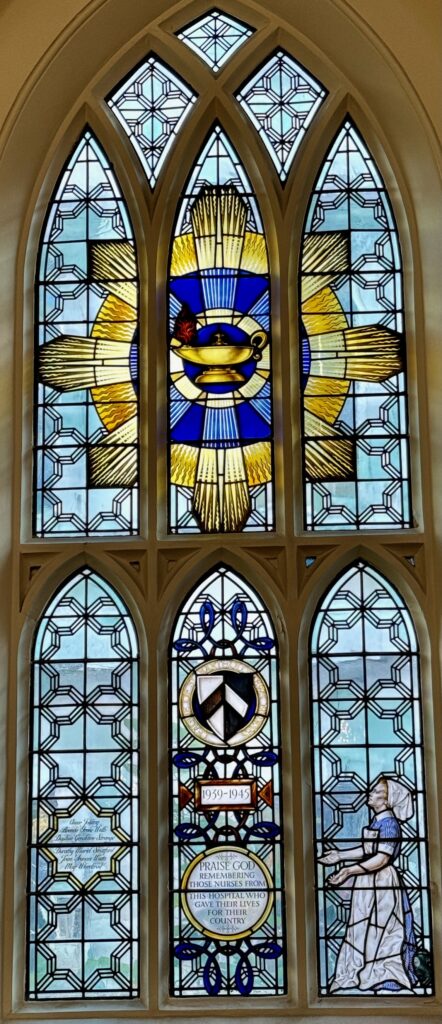
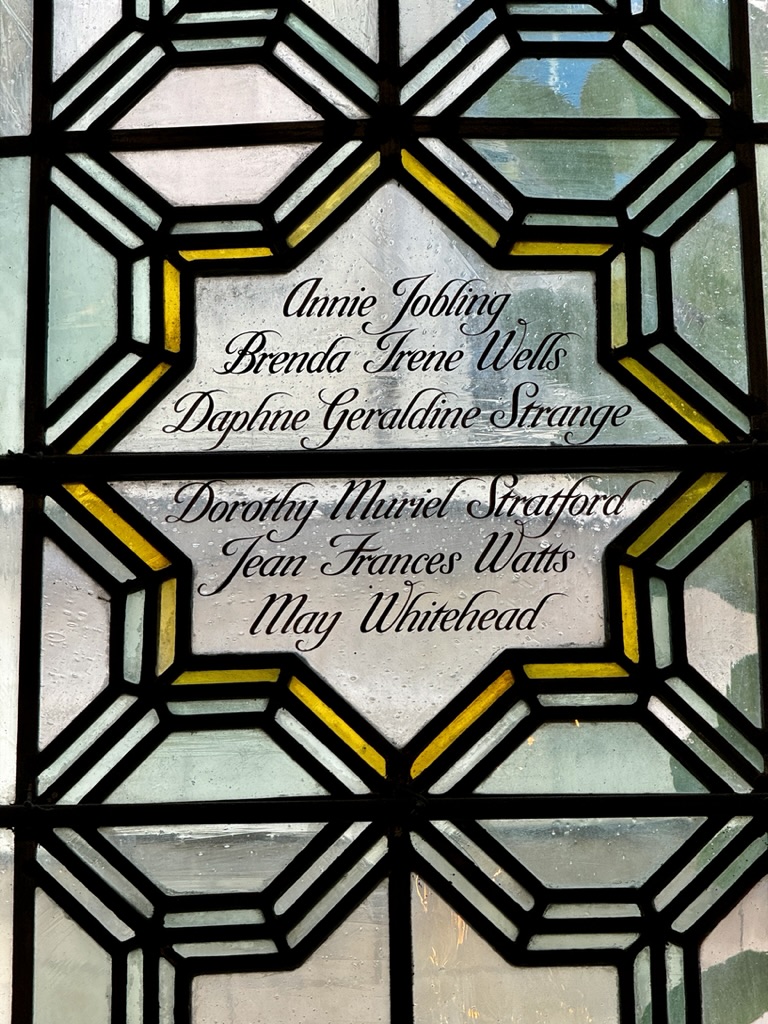
The doctors’ memorial window …
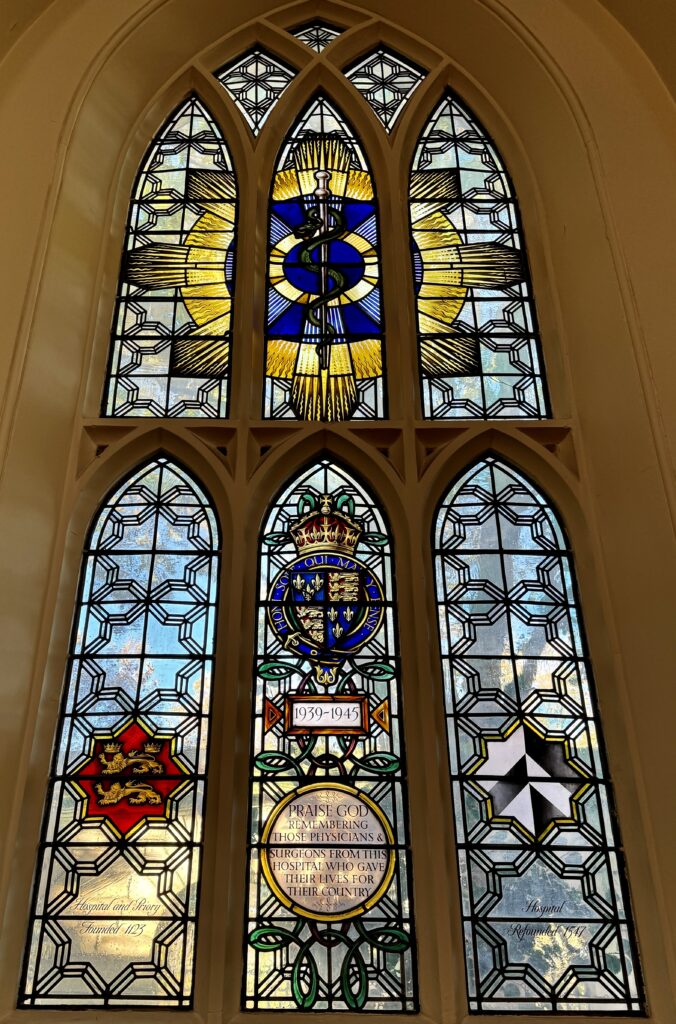
The mid-19th century alabaster pulpit depicts Christ healing the sick …

On the east wall is the poignant memorial plaque to Arthur Jermyn Landon …

The reflections make it difficult to read so here it is in full …
His former medical contemporaries at St Bartholomew’s Hospital have set up this tablet to keep in memory the bright example of ARTHUR JERMYN LANDON Surgeon Army Medical Department who, while continuing to dress the wounded amid a shower of bullets in the action on Majuba Hill, was in turn mortally wounded. His immediate request to his assistants “I am dying do what you can for the wounded” was characteristic of his unselfish disposition. His habitual life was expressed in the simple grandeur of his death. He was born at Brentwood Essex 29th June 1851. Died two days after the action at Mount Prospect South Africa 1st March 1881.
Here he is in an image of him dated 1881 held at the Wellcome Foundation …

The elaborate memorial to John and Mary Darker (Died 1784 and 1800) …

Before you leave, look to the right of the door and you will see the tomb of Surgeon John Freke (1688-1756) …

English History Online has the following to say …
… a remarkably curious tomb of the fireplace kind, most elaborately wrought. It is the tomb of Freke, the senior surgeon of St. Bartholomew’s Hospital, who wrote many works upon surgery, still to be found in its library. His bust is to be seen in the museum of the hospital, and he is represented by Hogarth, in the last plate of “The Stages of Cruelty,” presiding aloft over the dissecting-table, and pointing with a long wand to the dead “subject,” upon whom he is lecturing to the assembled students.
And here it is …

You can read more about Hogarth’s The Four Stages of Cruelty here.
Look back after leaving the church and observe the oldest parts of the building, the 15th-century tower and west end of the church …

Within the tower are three bells, the oldest being cast in 1380. The bells are hung in the original wooden frame thought to be the oldest in London.
Remember you can follow me on Instagram …
